


Stonewall




Stonewall
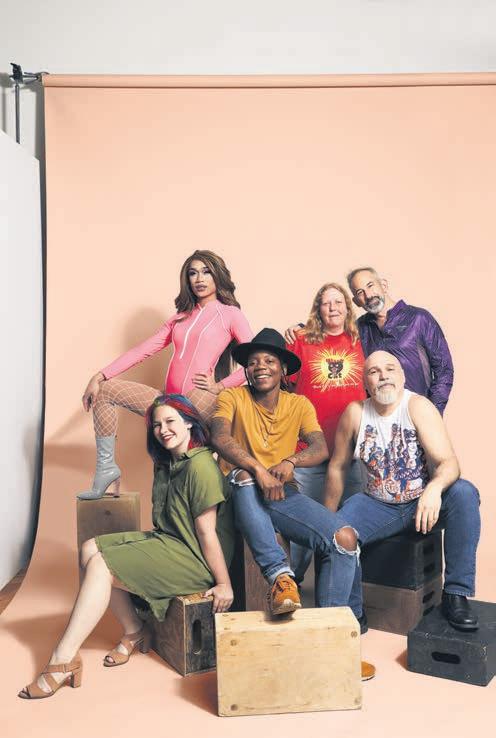
04 Public Service Announcement Chicago organizations that offer help, advice, and solidarity to the LGBTQIA community
05 Joravsky | Politics Which vice is more destructive: gambling or reefer?
07 News The push to make all single-stall public restrooms in Illinois gender-neutral

09 Restaurant Review A snug snack shop across from the Guatemalan consulate offers a taste of Central America.

11 Parade Relive Chicago’s 1976 Pride Parade
12 Photo Centering the voices and experiences of Black lesbians
20 Pins Walk down button memory lane with the Reader and Windy City Times.
end of vaudeville, If I Forget is a powerful portrait of a family trying to survive in a changing world, and a bracingly honest stand-up returns with World’s Greatest Dad(?)
26 Festival This year’s African Diaspora International Film Festival illuminates the experiences of Black people around the world.
27 Movies of note Deserter delivers an anti-communism message and stellar acting, Pasolini presents the Italian director like a modern-day saint, and Brainiac: Transmissions A er Zero shows how to rebuild a er tragedy.
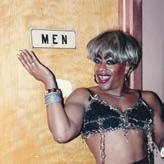
30 Feature How Homocore Chicago propped open the gate for queer punks.
35 Shows of note Earth, Leela James, Ruido Fest, and more this week
36 Secret History of Chicago Music Lithuanian American power poppers Dead Freddie defy their own demise
39 Early Warnings Imfact, Sheer Mag, Helmet, and more justannounced concerts
PUBLISHER TRACY BAIM
EDITORS IN CHIEF SUJAY KUMAR, KAREN HAWKINS
DEPUTY EDITOR KATE SCHMIDT
CREATIVE LEAD SUE KWONG
DIRECTOR OF PHOTOGRAPHY JAMIE RAMSAY
CULTURE EDITOR AIMEE LEVITT
MUSIC EDITOR PHILIP MONTORO
ASSOCIATE EDITOR JAMIE LUDWIG
SENIOR WRITERS DEANNA ISAACS, BEN JORAVSKY, MIKE SULA
STAFF WRITERS MAYA DUKMASOVA, LEOR GALIL
EDITORIAL ASSOCIATE S. NICOLE LANE
GRAPHIC DESIGNER DAVON CLARK
SOCIAL MEDIA EDITOR BRIANNA WELLEN
MUSIC LISTINGS COORDINATOR
SALEM COLLO-JULIN
FILM LISTINGS COORDINATOR PATRICK FRIEL
THEATER ASSIGNMENTS EDITOR CATEY SULLIVAN
CONTRIBUTORS NOAH BERLATSKY, DAVE CANTOR, LUCA CIMARUSTI, ISA GIALLORENZO, ANDREA GRONVALL, KT HAWBAKER, RACHEL HAWLEY, JUSTIN HAYFORD, JACK HELBIG, IRENE HSIAO, DAN JAKES, MONICA KENDRICK, STEVE KRAKOW, MAX MALLER, BILL MEYER, QUINN MYERS, J.R. NELSON, LEAH PICKETT, KERRY REID, BEN SACHS, DMITRY SAMAROV, TIFFANY WALDEN, ALBERT WILLIAMS
DIRECTOR OF DIGITAL JOHN DUNLEVY
DIRECTOR OF PUBLIC ENGAGEMENT & PROGRAMS KRISTEN KAZA
OFFICE MANAGER SORAYA ALEM ADMINISTRATIVE ASSISTANTS JANAYA GREENE, YAZMIN DOMINGUEZ
ADVERTISING
312-392-2970, DISPLAY-ADS@CHICAGOREADER.COM
CLASSIFIEDS: SALEM@CHICAGOREADERCORP.COM
SALES DIRECTOR PATTI FLYNN VICE PRESIDENT OF SALES AMY MATHENY CLIENT RELATIONSHIP MANAGER TED PIEKARZ SENIOR ACCOUNT REPRESENTATIVES BOB GRIFFITH, ANDREW HAYES, JORI LIEFSCHULTZ, LENI MANAA-HOPPENWORTH, ALEX RAY, LISA SOLOMON, BILL WOSSOW CLASSIFIED SALES MANAGER WILL ROGERS
NATIONAL ADVERTISING
VOICE MEDIA GROUP 1-888-278-9866 VMGADVERTISING.COM JOE LARKIN AND SUE BELAIR
DISTRIBUTION CONCERNS distributionissues@chicagoreader.com 312-392-2970
Not pictured: Husband-and-husband team photographer Jeremy Hayes and stylist Matthew Ancer
18 Comedy A generation that grew up queer on the Internet finds a home on Chicago’s drag stages.
22 Pride Ten essential plays for Pride Month
24 Review The Mountaintop depicts a very human Martin Luther King Jr. on the eve of his assassination.
24 Plays of note The Ballad of Le y & Crabbe tells a tale of the
39 Gossip Wolf Local producers Tensei create an electronic canvas of astral soul, Chicago house producer Derrick “Sleezy D” Harris passes away, and more.
41 Savage Love Dan Savage offers advice to a husband whose wife won’t even kiss him.
42 Jobs
43 Apartments & Spaces
43 Marketplace
STM READER, LLC
BOARD PRESIDENT DOROTHY R. LEAVELL
TREASURER EILEEN RHODES
SECRETARY JESSICA STITES
AT-LARGE SLADJANA VUCKOVIC
CONSULTANT CAROL E. BELL
READER (ISSN 1096-6919) IS PUBLISHED WEEKLY BY STM READER, LLC 2930 S. MICHIGAN, SUITE 102 CHICAGO, IL 60616 312-392-2934, CHICAGOREADER.COM
COPYRIGHT © 2019 CHICAGO READER




SUNDAY JUNE 30 STEP OFF
12 Noon • Broadway at Montrose PARADE ROUTE
12 Noon from the Broadway/Montrose corner proceeding south on Broadway; then south on Halsted; then east on Belmont; then south on Broadway; then east on Diversey to Cannon Drive
INFORMATION
www.ChicagoPrideCalendar.org 773-348-8243 • PrideChgo@aol.com
Ride the CTA/PACE/METRA to the parade www.transitchicago.com • 312-836-7000 www.metrarail.com • 312-322-6777
P is for pride
Chicago organizations that offer help, advice, and solidarity


A Pride Parade fl oat in Boystown, 2012 @NATHANMAC87/FLICKR
As a loyal Reader reader, you may already feel well versed in LGBTQIA issues. I’m hoping that the majority of you are at least an A (ally) even if you’re not feeling aligned with the other letters (and by the way, LGBTQI people should also be A’s for each other, in case we all forgot). Sometimes life brings you more complicated situations than were covered in Lesléa Newman’s 1989 book Heather Has Two Mommies . You’ve always felt like an advocate, but you’ve just found gay porn in your 14-year-old son’s room. You’re out to everyone in your personal life, but you’re trying to get ahead in a conservative industry and feel conflicted about letting your coworkers know about your partner. You manage an o ce and want to do more than just say you’re inclusive. Here are a few of the many Chicago organizations that can offer help, advice, and solidarity.
Originally Parents and Friends of Lesbians and Gays, PFLAG has offered free support groups for allies and the LGBTQI community since 1973. A PFLAG get-together is o en the first step for parents of recently out LGBTQI people trying to navigate the new waters and learn how to be supportive. PFLAG was even recommended by Dear Abby in a 2016 column as a helpful resource for a trans person looking to reveal the news to their parents. I recommend the Allies page at the national PFLAG website for a guide for training ideas and topics for straight people looking to learn about language and inclusivity.
The Center on Halsted was previously known as Horizons Community Services, which came from Gay Horizons, the original founding name from 1973. Horizons had a free help-line
phone service largely manned by community volunteers for many years, and today’s Center on Halsted has programming in the same spirit. It’s a community and cultural center that serves LGBTQI people of all ages with group therapy, job placement, social and recreational programs, family activities, and more. Center on Halsted also has comprehensive programs offering help to LGBTQI seniors in the community and those living with HIV/AIDS.
Affinity is a social justice organization that has supported Black lesbian, bisexual, and trans women thoughout its existence, though its research and activities also serve the broader LGBTQI and Black communities. In addition to peer-led support groups, Affinity works on research and networking initiatives, like the recent webinar series the Blackprint, a “plan for building the leadership capacity” of Black LGBTQI women.
Chicago House is an organization that was formed in the 1980s to assist persons with HIV/AIDS facing homelessness. It has grown into a multifunctional social service agency, including the TransLife Care program for trans people needing help navigating everything from housing to legal issues. Other Chicago House community services include rental assistance, case management, and healthcare navigation. —SALEM COLLO-JULIN
PFLAG CHICAGO METRO CHAPTER 773 - 472- 6469 pflagillinois.org
CENTER ON HALSTED
3656 N. Halsted 773 - 472- 6469 centeronhalsted.org
AFFINITY COMMUNITY SERVICES 773 -324 - 0377 affinity95.org
CHICAGO HOUSE
1925 N. Clybourn 773 -248 - 5200 chicagohouse.org

Let’s pit reefer vs. gambling to see which is worse.
By BEN JORAVSKY
much less debate.
If you want to know more about the consequences of the 816-page gambling bill, I urge you to read the stories by Dan Mihalopoulos and Jason Grotto—a tagteam of investigative reporters for WBEZ and ProPublica, respectively, who proclaim the new bill will “transform Illinois into the gambling capital of the Midwest.”
Here’s a sampling . . .






















Quick question . . . Which vice is more destructive: gambling or reefer?
I’ve been posing this question for weeks, ever since our state legislators expanded one and legalized the other.
The overwhelming response is gambling, of course. In fact, when I broadened the vices we legalize and tax, most people place marijuana third in destructiveness, behind liquor and cigarettes. And yet?
Well, let me start with the good news. Yes, state legislators finally got around to voting to legalize marijuana—something they should have done years ago,
And, yes, Governor Pritzker signed the bill. So yes, you can legally smoke as of January 1. So congratulations one and all.
But man, oh, man, the hypocritical anguish and agony of legislators as they made their vote was almost too much to take.
In contrast, they whipped that gambling expansion bill through the statehouse in the last days of the session that had already gone overtime and when most reps and senators wanted to go home.
I haven’t seen such rapidity on passing a major bill since the City Council passed the parking-meter deal with almost no thought,
“The legislation legalizes sports gambling; sanctions six new casinos, including one in Chicago; increases the number of video gambling machines . . . and transforms the state’s horse racing tracks into ‘racinos’ by permitting casino operations at the state’s three existing tracks.”
“The number of state-sponsored gambling ‘positions’—seats to place a bet inside a casino, bar or racino—will grow from almost 44,000 to nearly 80,000. That’s about four times the number of positions in any neighboring state. . . . Within two years, Illinois could have more than 7,000 video gambling establishments, 5,000 lotterylike sports betting kiosk locations, 16 casinos, five racinos and online sports gambling accessible on millions of mobile phones.”
Place your bets, suckers.
Look, I’m not calling for a prohibition on gambling. I’m a libertarian when it comes to vices—legalize them all, with proper oversight, of course.
But why are we so cautious about the consequences of one vice and so cavalier about the other?
I blame it on the "War on Drugs" we spent the last 50 or so years fighting. It was a horrific waste of time and energy that destroyed countless families and communities—especially Black ones.
There were many reasons to support the legalization of marijuana—not the least









TAKE ONE OF OUR 85 TOURS AND SEE CHICAGO FROM A FASCINATING PERSPECTIVE.
















of which is that it’s so freaking hypocritical to throw Black people into jail for the high crime of doing something that white people do every day without a second thought.
But Republicans dedicated years to the War on Drugs, cheered on by Bill Clinton Democrats who were determined never to let the Republicans make them look “weak” on crime. Obviously, they couldn’t just let it go overnight. Got to pretend they truly believed all that antidrug nonsense they’ve been spouting for years. Hence, the antireefer breast-beating in last month’s legislative debate by legislators who, for all I know, went out afterwards
and got staggeringly drunk.
But gambling? Well, there’s never really been a war on that. The state instituted the lottery years ago. Churches and not-for-profits have been having raising money with bingo and casino nights forever.
Hardly any Republicans voted to legalize reefer. But the gambling bill had widespread bipartisan support.
So apparently it’s OK to smoke, drink, and gamble. But reefer? It’s the demon drug!
Oh, there was anguish over the recent gambling expansion bill. But it had almost nothing to do with whether turning Illinois into Vegas made it easier for suckers to go broke playing

games that were stacked against them. No, it had to do with which team of billionaires—with their armies of lobbyists—would prevail over the other.
In the end, in-state gambling interests largely beat back attempts by out-of-state online sports betting sites to get a toehold in Illinois.
Bottom line: the operators who run the gambling industry wanted to make more money, and the politicians who run the state needed more tax dollars to, you know, run the state. And that was that.
That brings me to the recent "fair tax" initiative that also passed the house and senate last session. This is an initiative to replace the current flat tax with one that makes wealthier people pay at a higher rate.
Not one Republican legislator—including those who voted to expand gambling—voted for it.
Apparently, Republicans don’t mind raising taxes so long as someone else pays them. In this case, gambling addicts and other suckers.
that can be downloaded from many sites.
Directed by Chris Buddy, it tells the story of KC, a card counter. That’s a guy who’s smart enough to beat the casinos at blackjack by predicting safe bets to make by studiously keeping track of what cards have been played.
Thanks to his card-counting capabilities, KC, not the casinos, has the upper hand. So how do casino operators treat him? They kick him out of their casinos.
If they ran the NBA this way, my beloved Bulls would get to ban LeBron or Kawhi or Curry from playing. That way they might actually win a championship, as it’s hard to lose if you keep the better guys from playing.
I’m not sure how it can be legal to ban card counters from casinos. But it’s riveting to watch KC donning disguises to sneak past the casino’s thuggish security guards.
Again, I’m not calling for a gambling ban. But there’s got to be a saner way to fund government than soaking the suckers who are foolish enough to think they can beat the odds that are stacked against them. v
While I’m on the subject, check out Inside the Edge , an enlightening new documentary




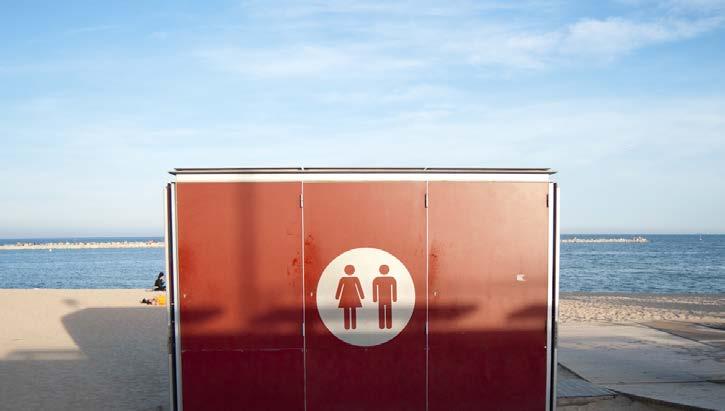
The push to make all single-stall public restrooms in Illinois gender-neutral
By NICO LANG
Every time Angelina Nordstrom wanted to use the restroom, it took ten minutes to get there and ten minutes to get back. Nordstrom, who is transgender, says that a former employer forced her to use the bathroom in a separate building after coworkers complained about her using the women’s facility.
“That was a lot of time out of a workday,” Nordstorm tells the Reader , estimating that her boss’s discriminatory order cost her up to an hour’s worth of productivity every day.
For the past four years, Nordstrom has lobbied with Chicago Restroom Access Project (CRAP) and the Pride Action Tank of Chicago to pass legislation that would ensure other trans and gender-nonbinary Illinoisans don’t have to experience the same mistreatment. If signed into law, Senate Bill 556 would mandate that “every single-occupancy restroom in a place of public accommodation or public building be identified as all-gender.”
On May 21, the Illinois house voted 109 to 55 in favor of the legislation.
Democratic state senator Melinda Bush of
Grayslake and state rep Sam Yingling, Democrat of Round Lake Beach, were joined by 15 other Democratic lawmakers in sponsoring SB 556. In a statement, Yingling claims the legislation’s passage “will ensure that every resident in Illinois, regardless of gender identity, is able to use a single-occupancy restroom without fear of discrimination.”
“I appreciate the overwhelming bipartisan support as this legislation will not only benefit trans Illinoisans, but parents with opposite sex children,” he says in an e-mail to the Reader, “such as a dad spending a day out with his little girl, and people with disabilities out and about with their caregiver.”
Supporters say compliance with the bill wouldn’t be burdensome for businesses: all restaurants and stores would have to do is replace the “male” and “female” signs on their single-stall restrooms with ones stating the facilities are open to everyone.
Myles Brady Davis, communications director and press secretary for the LGBTQ advocacy group Equality Illinois, says gender-neutral facilities are already the




norm on airplanes, Amtrak commuter trains, and in Starbucks cafes. In consulting with local businesses about the proposal, Equality Illinois found that 51 percent said all-gender restrooms “would have a positive impact on their business,” while 39 percent had no opinion.
“People just know that this is the right thing to do,” Brady Davis tells the Reader. “This is going to be a very life-changing bill that’s going to benefit so many.”
In addition to wide support from the business community, the legislation has met with little opposition, according to Illinois house speaker Greg Harris. While he says that a 2017 bill making it easier for transgender people to update their birth certificates was met with “really hateful” rhetoric in the state legislature, not a single senator voted against SB 556 when the proposal was debated in April.
The conservative Illinois Family Institute, for instance, has referred to birth certificates that accurately reflect a transgender person’s gender identity as “falsified” documents.
“Gender-pretenders can now acquire birth certificates that falsely identify them as the sex they are not and that falsely state that this identification happened at birth, which it did not,” the lobby group claimed on its website after the birth certificate bill was signed into law by former governor Bruce Rauner, a Republican.
“The chest pounding and the wailing and gnashing of teeth from opponents, you just don’t see anymore,” Harris tells the Reader “People are getting to understand that a bill like this is just a common-sense thing.”
After passing the house and senate, SB 556 is headed to Democratic governor J.B. Pritzker’s desk in the next 30 days. He will then have 60 days to sign the legislation into law.
The first-term Democrat, whose 2018 campaign website referred to him as “a staunch advocate for LGBTQ rights,” is expected to approve the bill.
SB 556 is similar to regulations already on the books in California, Vermont, and New Mexico, where they have met with little outcry. New Mexico governor Michelle Lujan-Grisham, a Democrat, OKed a gender-neutral bathroom law in April after the legislation, HB 388, passed its house of representatives with an overwhelming 54-12 majority in February. It goes into e ect July 1.
Although the legislation amounts to a “simple sign change,” as Brady Davis calls it, advocates say the passage of SB 556 would
be extremely meaningful for the estimated 49,750 trans and nonbinary people who call Illinois home.
While Brady Davis, who identifies as nonbinary and uses gender-neutral pronouns, has not experienced discrimination on the basis of their gender identity since transitioning, they plan to have a baby with their wife in the future. Brady Davis intends on carrying the child. Without a law like SB 556 on the books, being visibly pregnant could open them up to harassment or even violence in restroom facilities.
“I have my father’s face, but at the time when I’m pregnant, I would have my mother’s body,” they say. “Gender-neutral bathrooms would be the bathrooms that I would feel safest in.”
According to research from the Williams Institute, a pro-LGBTQ think tank at UCLA, seven in ten transgender people have been discriminated against while attempting to use the bathroom. Eighteen percent of respondents claimed they have been refused access to a restroom because of their gender identity, while 9 percent said they have been assaulted or beaten as a result.
But one of the reasons SB 556 has enjoyed such wide support is that it impacts more than just members of the trans community, according to Brady Davis. They point out the legislation also a ects “parents with kids of the opposite sex, caretakers of people of the opposite sex, and people with disabilities.”
The bill “helps a broad range of people,” Brady Davis says. “I’m going to be really happy the day that it’s signed.”
SB 556 isn’t the only pro-LGBTQ bill awaiting consideration by the governor. Earlier this year, the Illinois house and senate voted in favor of legislation mandating that public schools educate students about “the role and contributions of lesbian, gay, bisexual, and transgender people in the history of this country and this state.” Similar laws have been enacted in California and New Jersey.
Another bill awaiting the governor’s signature, SB 1319, seeks to prevent discrimination against LGBTQ seniors and people living with HIV in nursing homes, assisted living facilities, and other state-funded housing. It would classify these populations as “groups of greatest social need.”
Pritzker is expected to weigh in on the legislation, including SB 556, before the end of June, which marks LGBTQ Pride month. v
@Nico_Lang

A snug snack shop across from the Guatemalan consulate offers a taste of Central America.
By MIKE SULA
Co ee is one of the reasons that more Guatemalans are caught trying to get into the United States than migrants from any other country. According to the Washington Post, even premium fair-trade prices paid by large buyers like Starbucks can’t stop workers from throwing up their hands and risking everything for better lives in the U.S.
Douglas Cano sells Guatemalan coffee at Café Antigua, the tiny snack shop he operates with his wife, Karina, across the street and around the corner from the Consulate General of Guatemala in Jefferson Park. It’s not the
$4.95 grande Iced Caramel Cloud Macchiato sold at Starbucks, but rather a $1.99 cup of La Jarrillita instant co ee.
Still, most of Cano’s customers prefer to pay a dollar more for steaming mugs of sweetened atole to go with their tamales, chiles rellenos, and pacayas envueltas. In the 16 months he and Karina have been open, he says, they’ve found that most of the people who stop in before or after their business at the consulate have come to the midwest to escape gang violence in their home country, rather than the vagaries of the volatile international coffee economy.
The Chicago consulate provides a range of services for Guatemalan immigrants who’ve landed all over flyover country—Illinois, Iowa, Indiana, Minnesota, Missouri, Michigan, Ohio, Wisconsin, North Dakota. Most of these places don’t have groceries or restaurants that sell dishes or even staples from back home, so the Canos targeted an ideal spot to sell nearly two dozen Guatemalan antojitos and drinks.
And for now, it’s mostly Guatemalans coming through, happy to find a taste of home.
“There is a lady that comes once a month from Rockford,” says Douglas. “And she always takes, like, 20 chiles rellenos, 18 pacayas, and
ten chuchitos. She wants to take everything. She’s like, ‘I got a big family. I got a lot of mouths to feed.’ ”
The rellenos and pacayas are among the Canos’ best sellers. The former, unlike the familiar Mexican-style cheese-stuffed poblanos, are bell peppers packed with a fine mince of green beans, carrots, and pork or chicken. They’re battered with egg white and deep-fried, then served with tomato salsa and a shower of snowy cotija cheese on a housemade white corn tortilla. Pacayas are the unopened flowers of the pacaya palm, a bud that resembles a bundle of long, thin ears of corn. Crunchy and pleasantly bitter, they get the same treatment as the rellenos. So do a number of other snacks, most notably pigs’ feet, pressure-cooked before going into the fryer so that they’re unctuous and chewy, and sections of lengua as beefy and tender as a good steak.
Café Antigua is a cozy space. There’s not enough room for a fryer, so Karina preps and cooks these items at the Canos’ new brick-andmortar restaurant, Antojitos Guatemaltecos, in Belmont Cragin, and reheats them to order at Café Antigua. They hold up pretty well, as evidenced by the numbers of them that go on long out-of-state road trips.
Karina also stuffs and steams a family of Guatemalan tamales. There’s the traditional tamal colorado —soft, silky masa cylinders enshrouding a whole piece of pork or chicken, all snugly swaddled in banana leaf. Paches are similar, but formed from potato dough. Chuchitos are mini tamales wrapped in corn husk, tamalitos little tamales mixed with the earthy, somewhat sour leafy greens of a legume native to Mexico and Central America called chipilin. On the sweeter side, rellenitos de platano are ripe plantains stuffed with sweetened black beans, deep-fried, and powdered with confectioners’ sugar.
The word shuco is a slang term for “dirty” when referring to a person, but it’s also the name of the Guatemalan hot dog, which is likely to give Chicago dog partisans the vapors, as it’s a wiener (or longaniza sausage) blanketed with cabbage, mayo, mustard, and ketchup and cradled on a bun smeared with guacamole. It’s one of the more conspicuous snacks at Café Antigua, perhaps outdone only by another great achievement in cross-cultural J







continued from 9
culinary pollination: the tostada de chao mein.
Supposedly the product of decades of Chinese migration to Guatemala, it’s a pile of stir-fried noodles, peppers, and cabbage showered with cilantro and cotija, needing nothing more than a dash of Ina brand soy sauce.
The Canos also sell phone cards, photocop-








ies, faxes, money transfers, and groceries and crafts from back home. But the main draw is Karina’s food, which possesses the universally appreciated quality of deliciousness that everyone should be aware of, business at the consulate or not. v
@MikeSula



Photos by DIANE ALEXANDER WHITE


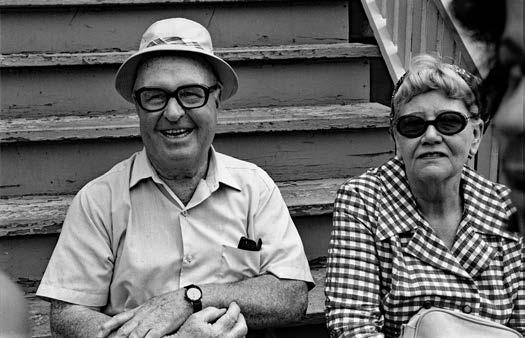
From le :
DIANE ALEXANDER WHITE was a photography student with a camera at the seventh annual Gay Pride Parade in 1976. It was the disco era, and the fashions of the day were captured by the 21-year-old Chicago native. The goal was to document the spirit of Chicago’s urban landscape and photograph candid moments of a vibrant city in motion. The LGBTQ parade was a grassroots, assertive declaration of independence with a small crowd and handful of marchers and floats on the southbound lane of North Broadway Street, as oncoming tra c continued in the opposite direction. Witness the diverse faces that paved the way for contemporary Pride. v
A handmade sign proclaims the “7th Annual Gay Pride Parade.”
The crowd watches from the vantage point of a Dominick’s grocery store while the Pride marchers ring a bell and play a trombone on Broadway.
Heavy Sunday traffi c fl ows in the lane opposite the marchers.
Psychedelic face paint, fur boa, and commemorative tank top announce the parade.
The crowd fi lls the sidewalk at Belmont and Broadway, while the Seahorse II fl oats down the street.


A drag queen waits for the parade to begin on the side streets of Belmont and Broadway
A couple enjoys the view of the parade from the comfort of their stairs.
Even the balloons are gay at Pride.
DIANE ALEXANDER WHITE PHOTOGRAPHY Through 7/ 10 Center on Halsted 3656 N. Halsted centeronhalsted.org

‘Black women are everything’
Centering the voices and experiences of Black lesbians in Chicago
Written and photographed by ZAKKIYYAH NAJEEBAH

I’ve lived in Chicago for almost ten years, have been active within queer communities, and have been identifying as a lesbian, but I had very little exposure to the history and the impact Black lesbians have had on Chicago’s south-side communities and beyond.
Then I met Krü Maekdo, who founded the Black Lesbian Archive in the summer of 2017 to preserve and communicate the history of Black lesbians via news articles, publications, photo albums, literature, and oral histories.
There are folks who have concerns that the term “lesbian” is disappearing, in this case more specifically Black lesbians. Amidst the beautiful progression and visibility of queer identities within the LGBTQIA+ community, there is something inherently powerful about naming. For the Black women I photographed, there is a resonant power and pride that comes with identifying themselves as exclusively “lesbian.”
These intergenerational portraits center the experiences, activism, and diverse ways in which Black lesbians in Chicago continue to thrive and actualize themselves on their own terms.
Participants’ statements have been edited for length and clarity.
KIERSTEN : “It was my sophomore year of high school that I realized I leaned more towards women. And now I feel I’m just a lesbian. I just connect more with women.
To be Black and gay is beautiful to me! Just being Black in general is hard.
“There’s so many people out here still figuring out how to identify themselves, and in the process being thrown down and doubted. So to be both Black and openly gay, to be comfortable with yourself and for me, it’s amazing.
Self-confidence is everything!
“Like RuPaul said, ‘If you can’t love yo’ self, how the
hell you gon’ love somebody else?’”
DOMINIQUE : “When my cousins would go out, I would go out with them and be in the gay scene. Most of my friends are also gay. We in the community everywhere (on the south side). You go outside by my house, it’s gay couples outside all the time. We everywhere. So when people say stuff about us not bein’ out here—we out here. And I haven’t really been to the Pride parties really, but it’s always love and fun when I’m around gay people. I feel comfortable and I feel safe.
“I’m just proud to be who I am. I love who I am. And I also love Black women! Black women are everything.”

“I’m a masculine-centered Black lesbian! It’s hard and it’s very exhausting having to always explain my womanhood. It’s always under question, and folks always expect me to overcompensate that I’m a woman just because I’m not always feminine presenting. I’m always judged by my clothes. I be tellin’ folks, ‘Don’t box me in, you’re gonna have a hard time and you’ll fry your brain trying to figure me out!’ But I proudly claim myself as a dyke. People have used that term,
though, sometimes to hurt me, but I’m not ashamed of that. I’m proud as hell to be gay. So yes—I’m a dyke! Just come at me with respect, that’s all I ask.
“I also just love Black women! It’s comforting to know I have someone to love who can relate to what I’ve been through—you know? My life, my trauma, all of it. I don’t have to always explain myself (with a Black woman) because they understand already—my wife knows me. I don’t have to tell her how to meet me halfway. She’s nurturing, loving, understanding, kind, and sweet. It feels like home. I can be my true self and don’t have to hide.”
Krü Maekdo Founder of Black Lesbian Archives
“Identifying as a lesbian feels like a revolution! Black lesbians I feel are always put at the bottom of the conversation. I love who I am and I feel powerful embracing who I am. There were all these different labels I was discovering at first but then I realized: ‘Actually, I’m just a lesbian!’ I love women—I’ve always loved women for as long as I can remember.

“When I came to Chicago and started Black Lesbian Archives, I was treading a line and was hesitant because queer is more inclusive, you know? So at first I thought, Should I do Black Queer Archives? So Imani [Rupert-Gordon, executive director] of Affinity [Community] Services asked me what it was I really intended to do, and I’m a Black lesbian who wants to know more about Black lesbians! There’s very little history that focuses on our experiences. I found a community with other Black lesbians who were doing similar work here in Chicago who supported the mission of the archives and were eager to work with me. So here I am!”
“Within the community, there’s a demand and importance for more ‘sober’ queer spaces that aren’t always about drinking or partying. Like small-group-type things or just more meet-ups. I’ve put myself out there more in that way and have made some great relationships. Especially with more Black women and women of color, for sure. But we need more spaces for rest and slowness, reflection and connection.

“But as far as, like, the identity and community that I consider myself aligned with, it’s the lesbian community. If I’m looking for resources, or a sense of support, or even just fun. And lesbian is just more specific. But when I say lesbian , though, it definitely makes people think I’m not attracted to men and I am. But that’s just my truth.
“The language is definitely important, but the more we keep holding boundaries, the more we isolate ourselves sometimes. It can limit collaboration in terms of health and education. But I also understand that people need a sense of identity and community.”


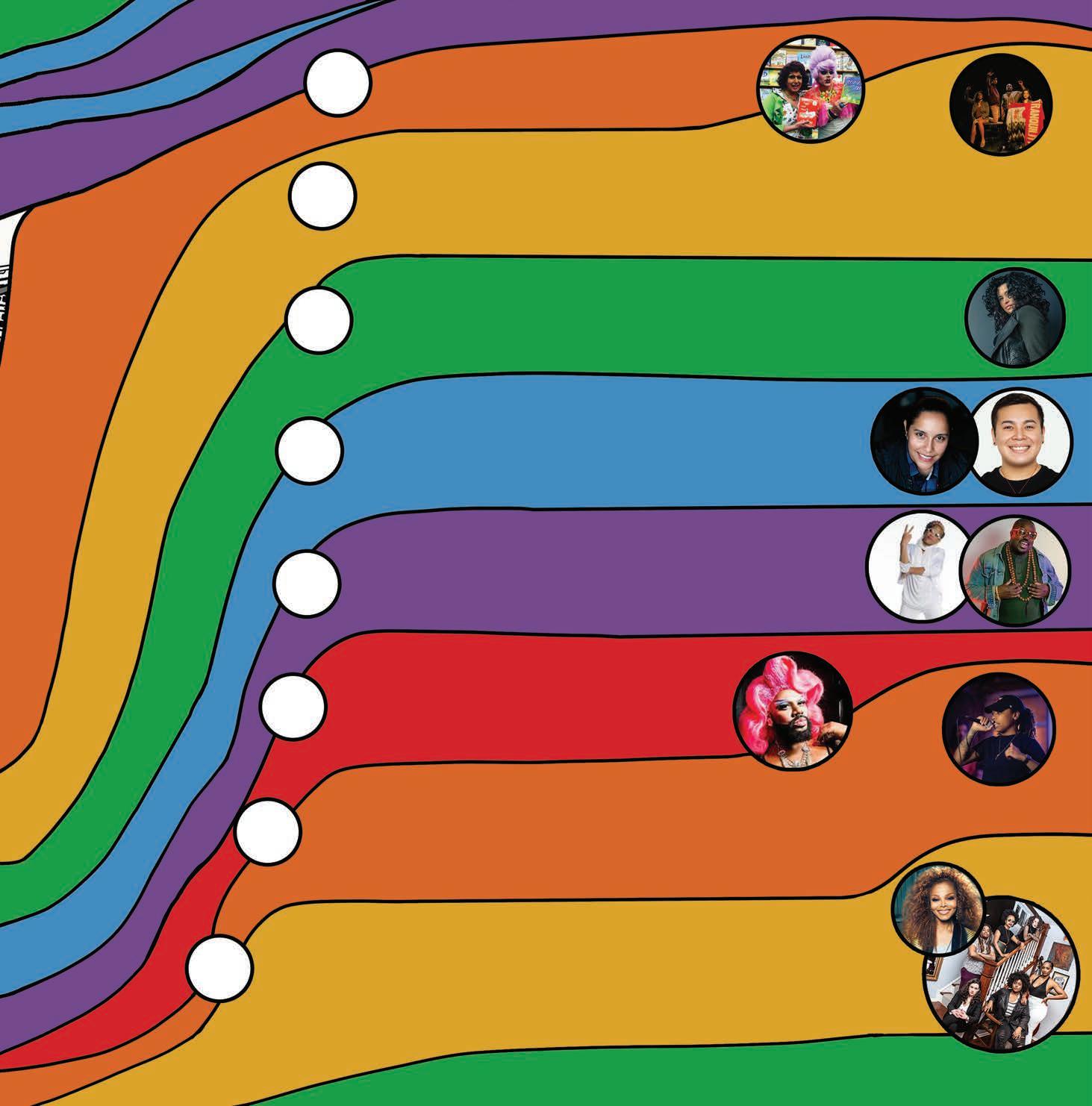

Pat McCombs Activist and organizer
“Here in Chicago, I’ve always been a party promoter and activating something! Executive Sweet started out with Pam Terrell and myself and DJ Sheron Webb. Eventually it just became me and Vera Washington. We went around and did a lot of stuff: boat rides, parties, and we had a lesbian bar up north at one point on Clark Street called Sweets. The reason we felt a strong need to gather amongst ourselves is that we played the type of music that we liked! And the type of things we liked.
“I also started the first Women of Color tent space
at the Michigan Womyn’s [Music] Festival. This was in 1986, I believe, and each tent had a different focus that centered the concerns of different women-of-color groups, such as Native American, Asian, Latino, and Black women. There were so many white women we had to do something to come together, and white women couldn’t come in, which was very controversial at the time. But on the outskirts, I had white women allies who would do anti-racism workshops.
“We were such a minority that we were on the outskirts, so we had different activities in place that could cater to us and just us!”
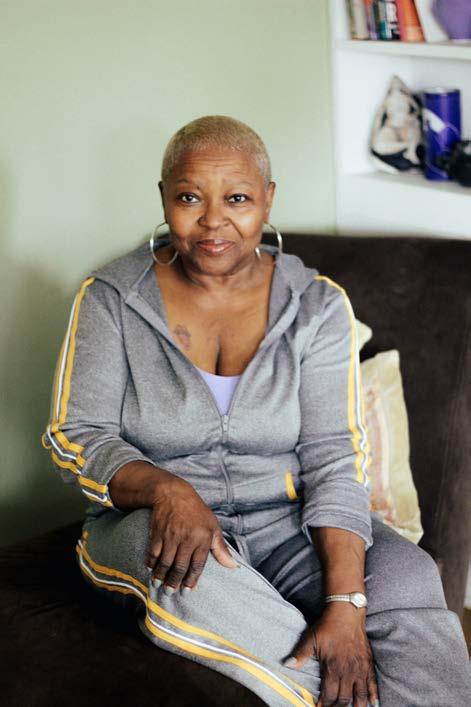

Mary Morten President of Morten Group
Willa Taylor Director of education and community engagement at the Goodman Theatre
MARY: “We just celebrated our 20th anniversary. We met for the first time at this conference in Long Beach, but it was the Creating Change Conference in Pittsburgh when we realized there was something there. We did long distance for about a year. And Willa moved here in December of ’99 . . . and now it’s been 20 years! I didn’t like
on I saw that we were missing stories about Black lesbians in particular. So I did this film called The NIA Project: Images of African American Lesbians . Stories are so important. And I’ve maintained this incredible array of relationships doing this work. There’s this idea that there’s work here to do and are you doing your work?”
WILLA : “Before we recognized we could be something more than friends, we would have these marathon phone calls talking about anything and everything—before the era of cell phones! The phone bills would be ridiculous! We would talk from work, and when my job would get the bill, they’d ask, ‘Willa . . . ?’ And I’d say I was working on a ‘special’ project.
“So we met [through] a really good friend of Mary’s and somebody who I hung out with and worked with, Renae Ogletree, who was a real sort of mover and shaker in the queer community, in particular the Black lesbian community here in Chicago. And also did a lot of work around HIV and AIDS. She introduced us.
her at first, but I realized how much I was laughing with her, and it remains an important part of our relationship. Being able to laugh makes all the difference. So here we are.
“From a very early age, I came out of college and started doing a lot of activist work. So I got involved with Chicago NOW [National Organization for Women] and became the first Black woman and lesbian [president] of that chapter, which at that time was the second-largest one in the country. I’ve also worked with Chicago Abortion Fund, doing a lot of work around reproductive justice. I’m also a filmmaker, and really early
“I think I was fortunate because I grew up during the civil rights era . . . in Texas . . . in segregation, [and] I was always in that kind of environment where everybody was always trying to figure out how to make the world better. It gave me a sense of myself, but it also always helped me recognize and identify triumphs. Right now, we have a wonderful circle of Black lesbians, and also gay men, here in Chicago. And we make an effort to try and make that accessible to people younger than us. But in terms of activism, most of my activism has always been about . . . living my life out loud. I’ve always tried to make spaces wherever I am.”

Ujo Wadjet
Wellness coach and fitness trainer
“Spirituality for me is about connecting to who you truly are on the deepest level. And so in turn, that’s me connecting to who I am in regard to my sexual orientation. There’s this masculine aspect and the feminine, and being able to
really see that through the lens of being a Black lesbian . . . changes how I view things. It took me a while to uncover that.
“Just even saying ‘I’m a Black Lesbian,’—because queer is so trendy a term right now—it means something. It’s about being exclusive within an inclusive space. So yes, I don’t only want to be under an umbrella, I want that lesbian voice to be heard. I feel like it’s becoming watered down. And it’s hard to connect sometimes. Even under this queer umbrella, there still needs to be a strong lesbian community. When it comes to Black lesbian spaces, where are we? We don’t have an established area or space. It can be hard, I feel, for us to find spaces exclusively for us. I say all this so people can know that we’re still here! It’s about confidence, pride, and awareness.”





Yvonne Welbon Filmmaker, founder of Sisters in Cinema and the Black Lesbian Writers Room
“I had an encounter with a woman my senior year of college and thought . . . I think I could be a lesbian? I always had a girlfriend but would date men every now and then . . . you know, here and there. But it was when I moved to Taiwan after college. I had been there for, like, six years. And I was like, I should decide. I think I was 27 when I decided. You know how I decided? I am a better me with a woman, I’m at my best. I’m my best person. I’m who I am truly when I’m with a woman.
“I couldn’t be who I truly am with men. But it was cra-

zy—I would disappear with a man, where I wouldn’t do that with a woman . . . you know? I don’t know if it’s socialization,
but I’m just a lesbian. The connection is there for me. For sure. No question about it.” v








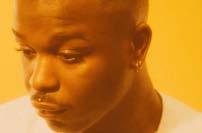














A generation that grew up queer on the Internet finds a home on Chicago’s drag stages.
By MEGGIE GATES
Derry Queen takes the stage in a laced leather corset and a black skirt. He begins performing a traditional lip sync to Lady Gaga’s “Paparazzi.”
And then things turn sour. An edited sound bite of Anderson Cooper declares that “Derry is a top,” a term in gay culture that, well, you can look it up, and Derry runs from the stage in shame. “I’m not a top!” he protests as Britney Spears’s “Piece of Me” plays him o and performers posing as paparazzi snap photos of him. The piece plays well to a sold-out audience packed shoulder to shoulder. Two men circle Derry and lift him over their heads as fake blood runs from his mouth. He’s met with a standing ovation.
The theatrics of Derry’s variety show transcend traditional expectations of drag. His show includes acts ranging between stand-up and sketch, all of which take him at least a month to churn out. Many of the acts rely on gags and pranks pulled on the audience to engage interest. Sound bites are perfectly edited to sync with videos, dubbed over and remixed to present surreal, larger-than-life conceptual pieces that usually stun the crowd. This is a rising form of art that incorporates Internet lingo, social commentary, and pop culture references into one drag number.
In Chicago, where both the gay and comedy communities thrive, it’s no wonder there’s been an artistic shift in the city’s drag comedy
“AUNTIE’S TREASURES”
Sat 6/22 , 5 PM, Bughouse Theater, 1910 W. Irving Park, facebook.com , pay what you can.

scene. Decked out in inflatable outfits (some representing Internet memes ) and extreme stylized makeup, drag queens are going to incredible lengths to make each performance a fully realized stage number, embellished with a story line, backup dancers, and acrobatics. Acts have progressed from stand-up and lip-synching to routines that rely heavily on visuals and, most importantly, viral videos and sound clips. The use of Internet culture, which also includes well-known Vines and newsrelated segments, makes the acts relevant to a younger audience. This is an experience, not just a performance.
“People are drawn to things they recognize right away,” says Derry Queen, whose “Derry Queen’s Big Queer Variety Show” runs monthly at the Hideout. “Using a sound clip you recognize or mirroring motions from a video is what gets people’s attention. That’s what’s getting popularized right now in the Chicago drag scene.”
Chicago’s pageant-drag roots have grown outward to intertwine with comedy and Internet culture. Costumes are still campy, but it’s no longer a beauty contest as much as a “who can do it all” contest. Queens must stay relevant, look amazing, have an individual stage persona, and sing and dance. They take on di cult tasks, such as LO-TI-ON’s re-creation of the Boston Dynamic robot dog (by moving back and forth with another performer inside
moving toward relying on summarizing ideas through video. Not only must a performer capture an audience’s attention onstage, they must do it online as well. Recently, the multimedia production company Rowdy House teamed with Chicago drag celebrity Aunty Chan to create “The Real Dragwives of Chicago,” a sketch featuring staged drama between five local comedy queens: Aunty Chan, Maureen SanDiego, Bambi Banks-Couleé, T Rex , and Saltine. In its first day online, the video attracted nearly 3,500 views.
“With the Internet now you see drag queens being a part of a viral sensation, at least in the queer community,” says Derry. “It might not necessarily reach everyone, but the comedy that people are doing now is reaching more people because it’s on the Internet.”
a cardboard cylinder spray-painted silver). Leaning on well-known pop culture references eases some of the pressure of trying to connect with an audience. The performance may flop, but at least everyone will enjoy it.
“When you see a drag mix, which is a wide variety of performance in one number, is usually when you see online viral sensations,” says Derry.
With an endless amount of resources, incorporating viral content can be a curse as much as it is a blessing. As with SNL, comedy queens must stay on top of the game to remain relevant.
“What’s hard for comedians today is that there’s so much new material coming out,” says Auntie Heroine, a queen who runs the monthly all-ages drag show “Auntie’s Treasures.” “People still talk to me about their favorite number of mine when I did Melania Trump, which was right after the inauguration. Then RuPaul released Aquaria doing a Melania bit two years later because they had filmed it when it was superrelevant, [but] nobody cared to see it. In general, our culture, since everything is there and it’s available, we have such a low attention span.” As someone who hosts a monthly drag show and travels the country to perform, Auntie knows that remaining relevant is key to maintaining interest.
Drag, like most things in our culture now, is
The new audience for drag is 16 to 30-yearolds who have grown up with the Internet and RuPaul’s Drag Race . And some people who first came out to see drag queens perform found a community they could be themselves in. Though the LGBTQ community has become more accepted by mainstream society in recent years, the Internet is still a home and a safe space where people can connect and talk to others who also feel ostracized during tumultuous times. For some young people, it remains the only outlet they can find.
“I run an all-ages show, but it’s difficult getting people out there,” says Auntie Heroine. “The teen queen community does a lot of video content. They have their own drag races, and they’re almost exclusively online because there’s nowhere to do it.”
This becomes what people recognize and know. It’s how the LGBTQ community invites people into conversation, by meeting pain with laughter. The energy is infectious and it’s what transforms online followings to people coming out to see a live show. It’s what packs Derry Queen’s show at the Hideout, where people sit knee to knee in folding chairs watching a drag number in which Mr. Krabs from SpongeBob SquarePants seduces a dollar bill to “I Can Hear the Bells” from Hairspray The familiar nostalgic attribute of this very queer performance leads people through the door between the world of mainstream media, where they feel like outsiders, to one of mashed-up pop culture, where they realize they belonged the whole time. It’s a home people might not realize they needed until they see what’s on the screen, moments of their childhood that make them feel safe. v
@meggie_gates




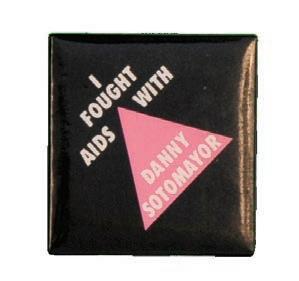








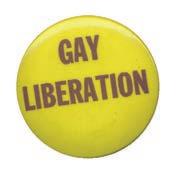








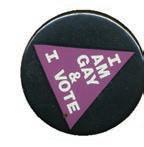




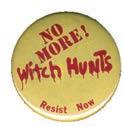



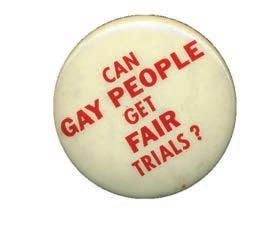
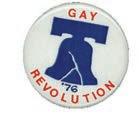










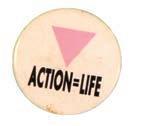








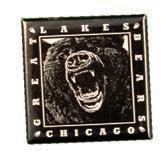

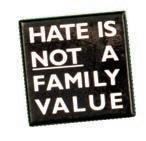









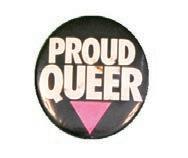








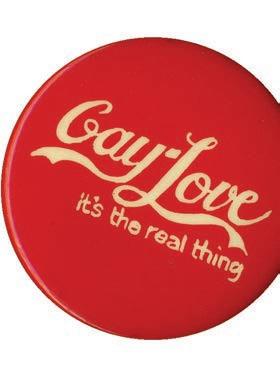

















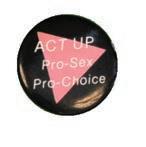














These buttons from the private collections of LGBTQ advocates Robert Castillo, Nancy Katz, and the late Marie J. Kuda date from the 1960s to the 2000s. Buttons have traditionally been a way for members of the community to wear their politics and make visual statements about the issues they care about. Walk down button memory lane with the Chicago Reader and Windy City Times this Pride Month.

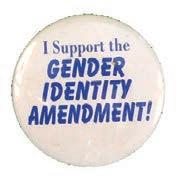












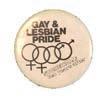






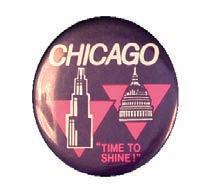
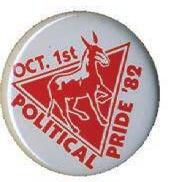







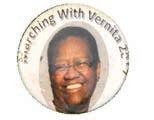


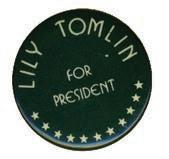





















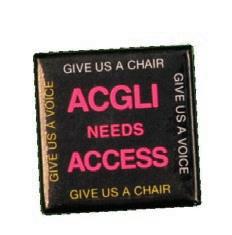




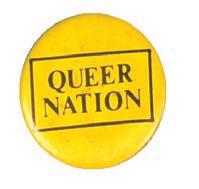





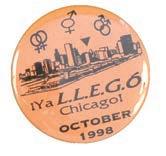




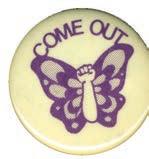








Steppenwolf’s Ms. Blakk for President
By ALBERT WILLIAMS
Lanford Wilson’s 1964 one-act The Madness of Lady Bright , a dynamic character study of an aging drag queen, is frequently cited as America’s first “gay play.” It premiered at Caffe Cino, an off-off-Broadway coffeehouse theater in New York’s Greenwich Village that also nurtured the work of emerging gay playwrights Robert Patrick, Tom Eyen, JeanClaude van Itallie, and William M. Ho man.
Arnold’s disapproving mother. A shortened version of the work, titled Torch Song, played on Broadway last year and is slated for a national tour this fall.
As Is and The Normal Heart, two dramas set during the first years of the AIDS crisis in New York, both premiered off-Broadway in 1985. William M. Ho man’s poetic As Is concerns a gay couple who separate, then reunite when one of the men is diagnosed with what was then an almost inevitably fatal disease. Larry Kramer’s semiautobiographical The Normal Heart scrutinizes with angry and sometimes anguished candor the ideological and personal conflicts among AIDS activists in the early 80s.


Mart Crowley’s 1968 The Boys in the Band was the first mainstream commercial hit about gay life. Set at an all-male birthday party whose bitter host draws his guests into a round of ugly but ultimately cathartic emotional games, the play depicts (as I wrote when I reviewed a 1997 About Face production) “the transformation of a subculture of shame into a community bound by self-understanding, self-respect, loyalty, and love.” Originally produced o -Broadway, Boys finally came to Broadway last year for a short run (for which it won a Tony Award for best revival), and in January, Windy City Playhouse will give the script its first Chicago staging in 20 years.
Martin Sherman’s harrowing, brilliant Bent, which premiered in London in 1979 before making its way to Broadway the following year, concerns a Berliner in Hitler’s Germany who’s sent to a concentration camp, where he passes as a Jew rather than a homosexual, earning a yellow star on his camp uniform instead of the more despised pink triangle. But his pose is compromised when he falls in love with an openly gay fellow inmate despite constant surveillance by gun-toting guards.
Jane Chambers’s Last Summer at Bluefish Cove opened o -Broadway in 1980, three years before Chambers died at age 46. It’s the story of a dissatisfied middle-aged married woman who falls in love with another woman she meets while on a vacation at a Long Island beachfront colony. Groundbreaking in its time, this once-popular, now-neglected tearjerker—along with the other plays in Chambers’s oeuvre—deserves another look.
Harvey Fierstein’s funny and moving Torch Song Trilogy opened on Broadway in 1982 after developmental productions off-offBroadway in the late 1970s. It’s a suite of oneacts about wisecracking but vulnerable female impersonator Arnold Becko and his complex relationships with his bisexual lover, Ed; Ed’s wife, Laurel; a gay teenager named David whom Arnold adopts; and, most intensely,
Tony Kushner’s sprawling “gay fantasia on national themes,” Angels in America, is a two-part epic chronicling the experiences of a network of people impacted by AIDS in 19851990, when medical advances began making the illness more manageable. A scathing indictment of Reagan-era indi erence to the epidemic (the cast of characters includes reallife right-wing power broker Roy Cohn), it’s also a meditation on humanity’s relationship to whatever divine forces may be at work in our lives, balancing philosophical, religious, and political inquiry with cracking-good soap-opera plotting.
Fun Home , Lisa Kron and Jeanine Tesori’s quirky 2015 musical, is adapted from lesbian cartoonist Alison Bechdel’s 2006 graphic memoir. It depicts Alison as a child, adolescent, and adult, charting her process of coming out and her troubled relationship with her closeted gay father.
In a year when American voters are considering the possibility of a small-city mayor becoming the nation’s first openly gay president, Steppenwolf Theatre ensemble members Tarell Alvin McCraney and Tina Landau are making waves with Ms. Blakk for President, described by Reader critic Dan Jakes as a “docuparty celebrating the true story of queer activist Terence Alan Smith, aka drag queen Joan Jett Blakk,” who ran for president in 1992 on the Queer Nation Party ticket. Cowritten by McCraney and Landau, the show is directed by Landau (who was named one of Out magazine’s “Out100” in 2009) and stars McCraney, whose other work on LGBTQ themes includes the plays Choir Boy, Marcus, or the Secret of Sweet, and In Moonlight Black Boys Look Blue, which became the basis of the film Moonlight v

WRITERS THEATRE
FRIDAY, SEPTEMBER 6, 2019
SONDHEIM’S MAGICAL & SUBVERSIVE FAIRY TALE MUSICAL
VICTORY GARDENS THEATER WEDNESDAY, OCTOBER 2, 2019
BASED ON THE COLUMN OF BEST-SELLING AUTHOR CHERYL STRAYED (“WILD”)
PORCHLIGHT MUSIC THEATRE
THURSDAY, NOVEMBER 7, 2019
STARRING HOLLIS RESNIK AS NORMA DESMOND
STEPPENWOLF THEATRE FRIDAY, DECEMBER 6, 2019
FEATURING LADYSMITH BLACK MAMBAZO
ABOUT FACE THEATRE
THURSDAY, JANUARY 23, 2020 OR FRIDAY, JANUARY 24, 2020 WORLD PREMIERE
TIMELINE THEATRE
WEDNESDAY, FEBRUARY 26, 2020
OR FRIDAY, FEBRUARY 28, 2020
CHICAGO PREMIERE
SCHOOL GIRLS; OR THE AFRICAN MEAN GIRLS PLAY
GOODMAN THEATRE
FRIDAY, APRIL 3, 2020
THE OFF-BROADWAY SMASH SENSATION AMERICAN MARIACHI
GOODMAN THEATRE
FRIDAY, MAY 1, 2020
A BIG-HEARTED MUSICAL PLAY
AMERICAN IDIOT
AMERICAN BLUES THEATER THURSDAY, JULY 9, 2020
GREEN DAY’S HIT CONCEPT ALBUM ONSTAGE






R THE MOUNTAINTOP
Through 6/30: Sat 7 PM, Sun 3 PM, Noyes Cultural Arts Center, 927 Noyes St., Evanston, 847- 866 - 5914, cityofevanston.org , $20

The Mountaintop depicts a very human Martin Luther King Jr. on the eve of his assassination.
By MAX MALLER
If he were still alive today, Dr. Martin Luther King Jr. would be 90. It’s been 51 years since his assassination, and it’s already di cult to imagine that such a person lived, with such power to mobilize people in the struggle for freedom and equality. His life can feel like folklore now, like a saint’s life.
This play by Katori Hall, which opens the Fleetwood-Jourdain Theatre’s 40th season of showing Black playwrights’ work in Evanston, exposes Dr. King, played by Jelani Pitcher, for what we always knew him to have been: a human being. He was a supremely flawed man, prone to cheating and “carrying on,” in the words of the script. When Pitcher makes his first entrance at the top of the show, he’s yelling o stage for cigarettes. He pleads with the nighttime manager of the Lorraine Motel over the phone for a cup of room-service co ee. He takes a leak.
Serving King his coffee on a fictionalized version of that stormy April night in Memphis, the last of his life, is a Black southern maid at the motel named Camae, played with foulmouthed, confident brilliance by Shadana Patterson. The show consists entirely of the interaction between “Preacher King,” as Camae calls him, and this maid who is more than she at first seems: God, like J. Edgar Hoover, has a file on Preacher King, which Camae has read. She knows what’s in store. Pitcher plays King as a man on the brink of complete exhaustion, consumed with terror
The Mountaintop BASIL CLUNIE
RTears of a clown
The Ballad of Le y & Crabbe tells a tale of the end of vaudeville.
The heyday of vaudeville is over and done with 15 minutes into this delightful new musical from Underscore Theatre Company, with book and lyrics by Brian Huther, Ben Auxier, and Seth Macchi and music by Huther and Auxier. Its heroes are two relics of the old school with a duo act to beat the band and nowhere to perform it, what with music halls shuttering and Hollywood’s first flowering guzzling the entertainment market share. Le y is played by Kyle Ryan, one of the best sad clowns I have ever seen. The deeper pain he’s in, the wider he smiles. His partner Crabbe is played by Shea Pender. Their close vocal harmony in the show’s duets lends added sweetness to the tender interaction of these outsize personalities.
Bolstering the central duo is a lively ensemble of minor characters. Tweed hats and flapper wigs abound. Footlights, check. The patter between songs comes fast and joke-heavy, especially when Mike Ott, who plays the conniving film agent in the boys’ corner, does his auctioneer’s bark at a million miles per hour.
in this over-the-top, smart satire of teen angst. In the Details by Caroline Hyde is a corporate parody set in hell with some silly, slapstick moments but without a central message. All together, they add up to a thoroughly enjoyable night out. —JOSH FLANDERS FOOTHOLDS Through 6/23: Thu-Sat 7:30 PM, Sun 3 PM, Collaboraction, 1579 N. Milwaukee, theimpostorstheatre.com , $16.
Jews, many opinions
If I Forget is a powerful portrait of a family trying to survive in a changing world.
Steven Levenson’s family drama, set in the months immediately before and a er the 2000 presidential election (but before 9/11) offers a time capsule of the cusp of the millennium, complete with Nader voters, newfangled cell phones, and Internet chat rooms. But the issues it tackles have only grown more pronounced, from gentrification to the eldercare crisis to the Israeli-Palestinian conflict (not to mention presidential election shenanigans).
for his life and uncertainty about the fate of his movement. “Fear is my lover,” he says. Patterson beautifully alternates between dressing down King for his self-importance and coddling his insecurity, between pushing away his advances and acquiescing to them. When revelation comes, she does the talking while Pitcher listens. Pitcher’s performance begins in fear and ends with a transfiguration, as the earthly Martin Luther King Jr.—who worries for his movement’s future, who plays too much, and who is so scared of being shot at any moment that thunderclaps outside the window startle him from his chair—prepares himself spiritually, with Carmae’s help, for martyrdom. In his last speech, the real Martin Luther King Jr. said, “I have been to the mountaintop, and I have seen the Promised Land.” This play, which debuted in 2009, tries to insist that the Promised Land for which King died is somehow our glorious present. Now it feels like a song of innocence from the heart of the Obama years. As the poet Simone White has said, “Every minute the Declaration must be signed.” King didn’t have the luxury of assurance in anything; he was a prisoner of hope. He believed in his people’s fight for freedom, even if that fight will never end. That faith, not any assurance, is what allowed him to intone, before he died, “Mine eyes have seen the glory of the coming of the Lord.” v @mallerjour
It’s a rip-roaring time, but the ground note of melancholy never fades away. Elisabeth Del Toro plays a starlet named Lolo Carmichael who’s engaged to an asinine producer. Lolo, like Le y, has melancholy threaded through her character, but she understands, and becomes Le y’s teacher in understanding that laughter doesn’t have to be about being happy. It can work as a disguise. You don’t even have to mean it when you smile, it turns out. But there happens to be no other way to stay alive in a world that’s gone haywire overnight. —MAX MALLER THE BALLAD OF LEFTY & CRABBE Through 7/14: Fri-Sat 7:30 PM, Sun 4 PM, Mon 7:30 PM, the Understudy, 4609 N. Clark, underscoretheatre.org , $20-$25.
The Impostors’ first season ends with the thoroughly enjoyable anthology Footholds.
The Impostors Theatre Company wraps up its inaugural season with Footholds, an anthology of five short plays tied together by one shared conceit: a stack of red construction paper used in various ways. While most local theaters produce a single show (o entimes running longer than necessary), it’s delightful to see a variety of engaging vignettes written by Chicagoans.
Maria Welser’s Refraction explores life’s meaning through the metaphor of the life span of a star, a unique take on our shared journey and the search for purpose. The fears, self-loathing, and criticisms we get from society and carry within us are literally on display in Stephanie Lewis’s Agita, which plays out as an impactful dance. Drew Michele, as Woman, does a wonderful job of silently communicating the social anxiety we all struggle with, though the decision to have a male member of the chorus “save” her diminishes her agency. The weakest entry, Creations by Kasey Mooney, presents a quiet young boy making origami in a park and interacting with various strangers who all seem to pity him.
In Natalia Terzic’s hilarious The Piper’s Calling, a group of teen girls obsessed with popularity decide to sacrifice one of their number to the devil because “death is the key to social immortality.” Sarah Bacinich, Raven Nichole, and Michele are completely hysterical
At times, Levenson seems determined to underscore the old chestnut about “two Jews, three opinions.” Here, we meet the Fischer family of Washington, D.C., headed by recently widowed patriarch, Lou (David Darlow). His son, Michael (Daniel Cantor), a Jewish studies professor, is about to publish a book with the inflammatory title Forgetting the Holocaust, arguing that American Judaism, which once stood for social justice, has become a culture of “death worship.” This becomes the initial inciting event for recriminatory debate. Lou, who helped liberate Dachau, tells Michael “For you, history is an abstraction. But for us, the ones who survived this century, this long, long century, there are no abstractions anymore.”
Devon De Mayo’s well-cast staging and Levenson’s script both keep us on our toes as the arguments ricochet and the Fischer family members unwind tightly coiled fears about declining economic security, emotionally fragile children, and their own mortality. A few moments ring false, but Levenson makes his characters more than political mouthpieces, and the result is a complex and emotionally rich portrait of members of a family trying to hang on to themselves in a darkening world. —KERRY REID IF I FORGET Through 7/7: Wed-Fri 7:30 PM, Sat 3 and 7:30 PM, Sun 3 PM, Tue 7:30 PM; additional performance Wed 6/26, 2 PM, Victory Gardens Theater, 2433 N. Lincoln, 773-871-3000, victorygardens.org , $27-$60.
The new farce Prophet$ looks back on the good old days of corrupt televangelists.
Anthony Tournis’s new farce is based on the premise that televangelists are hypocritical crooks who fleece their faithful flock. This once-startling insight might have carried some shock value back in the 1980s, when religious-talk-show host Jim Bakker’s career was undone by revelations of his sexual and financial misconduct. Today, not so much.
Set during the Reagan era, when “greed is good” became a national catchphrase, Prophet$ concerns three buddies who establish a TV ministry in a small Texas town. “Brother Vic” (played by Tournis) is a charming con man with a gi for salesmanship; rowdy Owen (Eric Roach) is his sidekick, a reformed drunk who lets Vic perform public “miracles” upon him to impress gullible Bible-thumpers; and Seth (Eric Wang) is the accountant whose pangs of conscience are
overridden by his lust for lucre. When a shrewd gri er named Darla (Ashley Yates) joins the team posing as Vic’s wife, their “Church of the Prophet” starts raking in big bucks—much to the displeasure of preening Leslie Goode (Timothy C. Amos) and his steel-magnolia mother, Evelyn (Hilary Sanzel), rival televangelists who do not appreciate the competition. When Vic and Leslie set out to destroy each other, each gets his comic comeuppance.
Though Prophet$ is a world premiere, it plays like an exercise in nostalgia—a tribute to 80s film comedies like Weekend at Bernie’s, Revenge of the Nerds, Three Men and a Baby, and the National Lampoon’s Vacation franchise. Under Wm. Bullion’s direction, this Factory Theater production compensates for implausible plotting with over-the-top clowning. A welcome note of emotional honesty is injected by Lorraine Freund as Agnes, an elderly victim of Vic’s con. —ALBERT WILLIAMS PROPHET$ Through 7/20: Fri-Sat 8 PM, Sun 3 PM; also Thu 7/11 and 7/18, 8 PM, Factory Theater, 1623 W. Howard, 866-811-4111, thefactorytheater.com , $25, $18 students and seniors.
A murky early effort from Tony winner Jez Butterworth
Playwright Jez Butterworth won the 2019 Best Play Tony Award for The Ferryman but it’s tough to see that coming in The River. You could use words like “nonlinear,” or “elliptical,” or “opaque” to describe Butterworth’s 65-minute play. Calling the BoHo Theatre production meaningless is more accurate. Well, perhaps not entirely meaningless. Directed by Jerrell L. Henderson, the drama’s myriad monologues about wild salmon and the joys of fishing are mildly educational for those looking to learn about the various lures used in the solitary sport. The plot—such as it is—centers on Man (Joe Lino), Woman (Christina Gorman), and Other Woman (Chelsee Carter). Man is religiously zealous about fly-fishing. He has a remote cabin where he hosts (not at the same time) Woman and Other Woman for a fishing getaway. The women alternate through Butterworth’s two-person scenes. It’s unclear whether they’re incarnations of


RJimmy Carrane grows up
The bracingly honest stand-up returns with World’s Greatest Dad(?)
It has been 28 years since storyteller, comedian, and teacher of improv Jimmy Carrane debuted his 1991 solo “intimate evening,” I’m 27, I Still Live at Home, and I Sell Office Supplies at the then very outsider-ish Annoyance Theatre. At the time only a handful of performers did this kind of bracingly honest autobiographical work, most notably Spalding Gray. (Comedy clubs at the time were dominated by self-involved, proudly underinformed, testosterone-poisoned white guys, delivering rapid-fire punch lines about how irritated they were at everything and everyone.) Carrane’s slower, more reflective, self-deprecating comedy style was honestly a breath of fresh air. It was also a big hit for Carrane, making his name, at least locally, and running for more than a year and a half.
Since then Carrane’s style of “honest comedy” has become the norm in the stand-up world (best example: Hannah Gadsby’s Nanette, though she is not alone), and in the world of the Moth and other Moth-ish storytelling events.
the same woman, two completely separate people, or ghosts of fishing trips past.
Whatever the case, the dialogue is packed with murky symbolism and heightened, affected language about salmon. The latter plays like a parody of Wordsworth or Thoreau. The former involves a mysterious scarlet dress and, perhaps, the fish themselves. None of it—not the identities of the women or the freighted symbolism—matters because the script goes nowhere. There is only fishing and talking about fishing and two
interchangeable women stuck in a script that absolutely flunks the Bechdel test. The cabin is adequately rendered by set designer Eric Luchen. The all-important prop fish calls to mind those mounted trout that sing “Happy Birthday.” That’s worth a laugh. Which is about all you’ll get out of RIVER Greenhouse Theater Center, 2257 N. Lincoln, 773404-7336, bohotheatre.com , $30.
In his current show, performed at a space in Second City’s Training Center, Carrane riffs on the themes of fatherhood—his ambivalent relationship with his workaholic father, his own ambivalence about becoming a father, the myriad ways he has learned, finally, in his early 50s, to become a father to himself and learn to accept himself as he is. Remarkably, Carrane tells his stories without a hint of bitterness or blame. Instead he gracefully mixes the sweet and the sour, one minute moving us with a serious observation, making us laugh out loud the next with a witty quip, and then moving us again with another of life’s bitter truths. The last 28 years have truly deepened Jimmy Carrane, making him the master —JACK Through 7/20: Sat 6 PM, Judy’s Beat Lounge at Second City, 1616 v
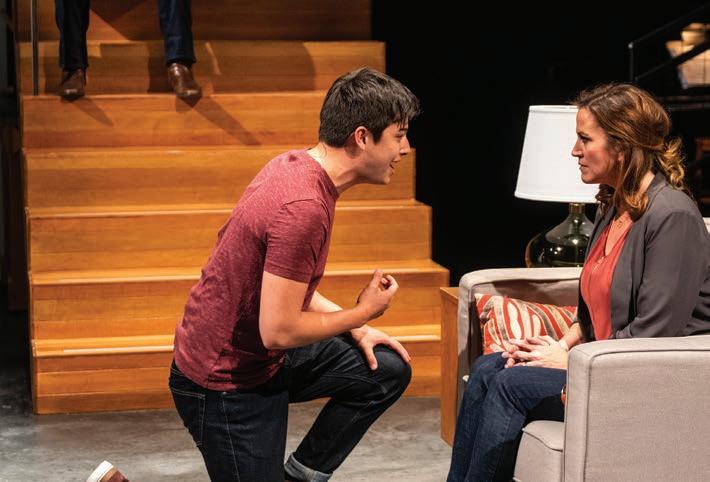





AFRICAN DIASPORA INTERNATIONAL FILM FESTIVAL Fri 6/21-Thu 6/27: dates and times vary, see website, Facets Cinémathèque, 1517 W. Fullerton, 773 -281-9075, nyadiff.org , $ 85 festival pass, $ 60 weekend pass, $10 -$12 individual screening, $ 8 students and seniors.

This year’s African Diaspora International Film Festival illuminates the experiences of Black people around the world.
By KATHLEEN SACHS
The films in the 17th Annual African Diaspora International Film Festival do what much media and even the public school system fail to do: educate. Through robust programming that gives meaning to the word “diverse,” the selections in this year’s festival illuminate the experiences of those living in the African diaspora around the world. The New York-based husband-and-wife programmers, Reinaldo Barroso-Spech and Diarah N’Daw-Spech, have chosen more than a dozen films that, through a variety of modes and genres, further dimensionalize already complex issues specific to those living in these communities. Naturally, documentary lends itself to this mission, though several narrative features and a short fiction add to the plenitude of information. Some of the documentaries tackle more famous subjects. In the opening-night film,
Ali’s Comeback: The Untold Story, Art Jones explores the series of events in 1970 that led up to Muhammad Ali’s first match after he was stripped of his heavyweight championship, then blacklisted due to his having famously refused to serve in the Vietnam war. In The Robeson Effect , director Juney Smith, who appeared alongside one of his subjects, Danny Glover, in Lethal Weapon 2, details the longtime friendship between Glover and actor Ben Guillory, who together started the Robey Theatre Company in Los Angeles, named after the great Black performer Paul Robeson. Other selections tackle historical events. The centerpiece film, Cash Michaels’s Pardons of Innocence: The Wilmington Ten , provides a comprehensive overview of the events surrounding the firebombing of a grocery store in Wilmington, North Carolina, in 1971. Nine Black men and one white woman were convict-
ed of arson; the bombing, never conclusively proven to have been carried out by the ten, followed mounting tensions in the community that culminated in a boycott of the local high schools.
Grouped together as a sidebar entitled “Caribbean Leaders,” the docudramas Catch a Fire (directed by Menelik Shabazz) and Barrow: Freedom Fighter (directed by Marcia Weekes) portray the lives and activist e orts of two Caribbean heroes. The first, made in 1995 (making it one of only two films in the festival that could be considered a revival screening), recalls the struggles of Paul Bogle, who led the 1865 Morant Bay rebellion, a protest against continued injustice following the abolition of slavery in Jamaica, which resulted in debate back in England over the governance of colonized people. The latter, narrated by former U.S. attorney general Eric Holder, tells the story of Errol Walton Barrow, who led Barbados to independence from Great Britain in 1966 and became the country’s first prime minister.
Dieudo Hamadi’s Kinshasa Makambo, one of my favorite films in the festival, documents a contemporary struggle in a decidedly forceful and necessarily straightforward manner. It follows three young men in the Democratic Republic of the Congo as they protest against then-president Joseph Kabila, who at one
point intended to circumvent the country’s constitution, which was only adopted in 2006, and run for a third term. The young men—Ben, Jean Marie, and Christian—face their own obstacles, from exile to imprisonment, and have their own ideologies regarding contemporary politics in their country. The most impactful parts of the film are scenes that document gunfire between the police and the protesters. They’re jarring, to be sure, but necessary in terms of accurately reflecting the struggles faced by this particular resistance.
Burning an Illusion , directed by Menelik Shabazz (who also directed Catch a Fire ), is the other of the two noncontemporary films in the festival, from 1981, and another of my favorites. Part of the program “Windrush: The Black Experience in the UK,” the film follows Pat (Cassie McFarlane), a young Black woman in London, over the course of her relationship with Del (Victor Romero) and her introduction to radical politics. Told from Pat’s perspective, what initially seems to be a film about a contentious relationship between two young people evolves in tandem with its characters, symbolizing a shift from preoccupations associated with white life to those of Black life. Shabazz’s direction is smart and subtle, and the entire cast, especially McFarlane and Romero, give thoughtful performances.
Other films in the festival include Lorna Holder and Yvonne Deutschman’s documentary Hanging Out: Youth Culture Then and Now, about youth culture in London over the decades; Out of Chaos, An Artist’s Journey in Haiti, featuring the artist Pascal Giacomini as he documents his process making sculptures for the Ghetto Biennale of Port au Prince, as well as the stunning work of other Haitian artists; Clare Anyiam-Osigwe’s romantic comedy No Shade; Jorge Pérez Solano’s Black Mexicans , a drama set in the Afro-Mexican community in Oaxaca; Jean Phillipe Gaud’s crowd-pleasing feature Tazzeka , about an undocumented Moroccan chef in Paris; the thriller Rattlesnakes (directed by Julius Amedume), based on Graham Farrow’s eponymous play; and the closing-night film, the Chicagomade family drama Thicker Than Blood (directed by Anthony L. Williams), which is accompanied by the short film Made in His Image (directed by 12-year-old Anah Ambuchi), about a Black girl who is bullied by her classmates. There’s much to learn from these films, and the programmers have organized the festival in such a way that the lessons build upon one another. v

This 1991 first feature by writer-director John Singleton, then 23, about growing up Black in South Central LA, shows some genuine talent in handling character and action, and equal amounts of confusion and attitude when it comes to matters of gender and ghetto politics. (Black women seem to bear the brunt of his anger about problems in the ghetto, and the white power structure is accorded a relatively free and guiltless ride.) With Ice Cube, Cuba Gooding Jr., Morris Chestnut, and Larry Fishburne. Stanley Clarke composed the score. Could the widespread popularity of this movie among whites be partially connected to the implicit acceptance of ghettos as an unchangeable fact of life? —JONATHAN ROSENBAUM R, 112 min. Tue 6/25, 7 PM. Music Box
In the midst of that all-too-brief period in the 90s when strange, noisy rock was at the apex of pop culture, Brainiac (also spelled 3RA1N1AC) stood out for their electrifying live shows and futuristic synth-fueled, punk-riddled sonic experiments that sometimes felt like they could’ve been beamed down from an alien spaceship. Founded in Dayton, Ohio, in 1992 by a group of childhood friends and led by multi-instrumentalist and musical prodigy Tim Taylor, Brainiac broke from the underground into the spotlight at a time where every major record company was looking to sign “the next Nirvana.” But in a blink it was all gone: Taylor died in a 1997 car crash at age 28, and the surviving members parted ways. Through archival footage, interviews, and animation, Brainiac: Transmissions A er Zero sheds light on what it’s like to move on following tragedy, while beautifully telling the story of creative weirdos who developed their own musical language and whose influence continues to pulse through independent music culture today. Directed by Eric Mahoney. —JAMIE LUDWIG 90 min. Mahoney and coproducer/editor Ian Jacobs attend the screening. Thu 6/27, 7 PM. Music Box
David Cronenberg wrote and directed this 1996 film, a masterful minimalist adaptation of J.G. Ballard’s 1973 neo-futurist novel about sex and car crashes, and like the book it’s audacious and intense—though ultimately somewhat monotonous in spite of its singularity. James Spader meets Holly Hunter via a car collision, and they and Spader’s wife (Deborah Kara Unger) become acquainted with a kind of car-crash guru (Elias Koteas) and his own set of friends (including Rosanna Arquette). Sex and driving are all that this movie and its characters are interested in, but the lyrical, poetic, and melancholic undertones are potent, the performances adept and sexy, the sounds and images indelible. If you want something that’s both different and accomplished, even if you can’t be sure what it is, don’t miss this. —JONATHAN ROSENBAUM 98 min. 35 mm. Sat 6/22, 7:45 PM, and Tue 6/25, 8:15 PM. Gene Siskel Film Center
I guess you’re supposed to like this 1985 movie because it strikes all the right attitudes about lesbian sex; it’s set in the 50s to make all of the 80s platitudes look revolutionary, and in the southwest to allow some fun with twangy regional accents and dippy local yokels. In an opening deliberately reminiscent of The Women, a tweedy, uptight professor of literature (Helen Shaver) arrives at a Nevada dude ranch to establish residency for a quickie divorce; her eye is caught by swaggering cowgirl Patricia Charbonneau, and she spends most of the rest of the film trying to rationalize the strange urge that possesses her. Mercifully, when the sex scene does finally arrive, it’s good, steamy stuff, but director Donna Deitch is hopelessly clunky when it comes to getting her characters to talk—and they talk, and talk, and talk. Clipping that one scene is all it would take to qualify Desert Hearts as one of those “controversial” TV movies. Viewer discretion is indeed advised, on more than one level. With Audra Lindley and Gwen Welles. —DAVE KEHR R, 96 min. Showing as a double feature with I’ve Heard the Mermaids Singing (see separate listing). Sun 6/23, 7 PM. Filmfront


The second film of director Jan Hřebejk and screenwriter Petr Jarchovský’s “Garden Store” trilogy (2017) is, to my mind, the best thing they’ve done in years. Set mainly during Czechoslovakia’s brief period as a democratic state in the years following World War II, it centers on a beauty parlor run by the brother-in-law of the protagonist of the trilogy’s first film, Family Friend (The movie contains many of the same characters as the preceding feature, but you don’t need to have seen that to appreciate this one.) Hřebejk regular Jirí Machácek delivers a deeply moving performance as the salon’s owner, a bighearted patriarch who foolishly thinks that if he runs a good business he can disregard the national political situation. He comes to realize how wrong he is only a er the Communists take power. Jarchovský presents the character’s downfall as a reflection of the country’s. The film delivers its anti-communist message more persuasively than Hřebejk and Jarchovský’s earlier feature The Teacher (2016), in part because it depicts the pre-Communist era with such warmth and affection. Hřebejk handles the large ensemble cast with characteristic assurance; indeed this would be worth seeing for the acting alone. In subtitled Czech, German, and Russian. —BEN SACHS 115 min. Fri 6/21, 7:45 PM, and Mon 6/24, 6 PM. Gene Siskel Film Center
Rock music producer and talent manager Andrew Slater makes his directorial debut with this hybrid concert film-documentary that revisits the mid-1960s, when LA’s Laurel Canyon became the birth canal for the California Sound. Former Wallflowers front man Jakob Dylan acts as tour guide and interviewer and makes an agreeable if low-key host; in between chatting up such former canyon habitués as Jackson Browne, Eric Clapton, David Crosby, Roger McGuinn, Graham Nash, Michelle Phillips, John Sebastian, Ringo Starr, Stephen Stills, Brian Wilson, and, in his final interview, the late Tom Petty, Dylan performs covers of several of their classics, backed by Fiona Apple, Cat Power, and Beck, among others. Since most of these numbers are merely snippets, the history of the era’s cross-pollination is more compelling: how the Byrds took folk music electric, and how Buffalo Springfield followed suit; how the Beach Boys’ Pet Sounds influenced the Beatles’ Sgt. Pepper’s Lonely Hearts Club Band; which musicians le what band for another, and why; and the rise of the 12-string guitar. Several of the talking heads and reminiscences were part of Jon Brewer’s nostalgic documentary Legends of the Canyon: The Origins of West Coast Rock (2010), but Slater’s film is slicker, better photographed, and more revealing. —ANDREA GRONVALL PG-13, 82 min. Slater and musician Jakob Dylan attend the Friday 7 PM screening, which will be followed by a performance by Dylan and the “Echo in the Canyon” band. Music Box
Chilean filmmaker Sebastián Lelio found an international audience with Gloria (2013), which gave Paulina García the role of a lifetime as a tough, impetuous, lonely divorcée; this follow-up (2017), starring Daniela Vega as a trans woman coming out of the shadows, cements Lelio’s reputation as a filmmaker who—like George Cukor or Pedro Almodóvar—knows how to treat a lady. Vega is mesmerizing as the protagonist, a young nightclub singer having an affair with a married, middle-aged businessman. A er he dies of an aneurysm during one of their trysts, she insists on grieving publicly
with the family despite their contempt and mounting abuse. In one frightening scene, a few of the men ambush her and wind plastic tape around her head, pulling her smoky features into an awful mask; their level of hatred is striking, but so is her dignity and proud forbearance. In Spanish with subtitles. —J.R. JONES R, 103 min. Tue 6/25-Thu 6/27, 10:30 PM. Logan
Lon Chaney’s most famous performance fails to redeem this fairly tedious 1923 historical epic, set in the 15th century as a revolution brews among the beggars of Paris. The self-torture demanded by Chaney’s makeup is impressive, as are the scales of the sets and the crowd scenes, but nothing comes to life under the flat direction of Wallace Worsley. —DAVE KEHR 93 min. Wed 6/26, 8:30 PM. Comfort Station F
The German film In the Aisles could be a workplace drama, if only there were any drama. Instead, it tries to be a kind of understated, slice-of-life offering that follows workers at a grocery superstore. However, it’s a view of blue-collar life from a privileged perspective, which assumes said workers are too trapped to truly effect any kind of change in their lives. Director Thomas Stuber does capture the minute details that make and break their world to some extent. There’s the emotional investment in minute tasks, the gatherings where everyone bonds and gossips. But Stuber refuses to allow any action his protagonist Christian (Franz Rogowski) takes to truly go anywhere. It’s less a portrait of modern malaise than of the filmmakers’ longing for meaning in an increasingly corporate world. Such assumptions amount to little more than yet another casual dismissal of those who are o en deemed unworthy of notice. —ANDREA THOMPSON 125 min. Fri 6/21-Thu 6/27, 1:30, 4:15, 7, and 9:35 PM. Music Box
Philly cop Sidney Poitier, stranded in racist Mississippi, teams up with redneck sheriff Rod Steiger to solve a murder. A decent piece of do-good cinema (1967), though the Academy Award went not to Poitier for his righteous indignation but to Steiger for his flamboyant cracker routine. Director Norman Jewison stages their confrontations for effectively flashy, immediate effects, though he unnecessarily neglects the action-movie underpinning. The semisequel, They Call Me MISTER Tibbs!, was much more satisfying in genre terms. With Lee Grant and Warren Oates. —DAVE KEHR 109 min. Sat 6/22, 5 PM. Rebuild Foundation, Stony Island Bank F
Polly (Sheila McCarthy), the “organizationally impaired” heroine of Canadian writer-director Patricia Rozema’s whimsical first feature (1987), gets a secretarial job at a chic Toronto art gallery and becomes infatuated with Gabrielle (Paule Baillargeon), the sophisticated curator, while taking everyday photographs and indulging in eccentric daydreams in her spare time. Her rude encounters with the corruption and hypocrisy of Gabrielle’s world form the main substance of the story, which caters to middlebrow cultural insecurities even more doggedly than Woody Allen does. While it’s refreshing to find lesbian sensibilities represented honestly in a mainstream context (the performances are adept, and the conclusion is intriguingly open-ended), the cutesy style tries to promote the heroine’s dimwitted innocence in such anti-intellectual fashion that the movie’s self-righteousness may set your teeth on edge. The very

title of the film, which misquotes a line from Eliot’s “The Love Song of J. Alfred Prufrock,” is symptomatic of the pretensions in store. —JONATHAN ROSENBAUM R, 81 min. Showing as a double feature with Desert Hearts (see separate listing). Sun 6/23, 7 PM. Filmfront
Peter Lorre stars in Fritz Lang’s sympathetic and terrifying story of a child murderer, filmed in Germany in 1931. The underworld joins forces with the police in tracking down Lorre’s plump, helpless maniac because his atrocities have interrupted the course of crime-asusual. The moral issues are complex and de ly handled: Lorre is at once entirely innocent and absolutely evil. Lang’s detached, modified expressionist style gives the action a plastic beauty: the geometry of the images is reflected in the geometry of the plot, as every piece of film clicks together on its way to the inevitable climax. Two lines meet, and Lorre is at the center. The Munich Film Archive restored the film to a length of 105 minutes; this earlier version runs 99 minutes. —DAVE KEHR 99 min. 16 mm. Thu 6/27, 7 PM. Univ. of Chicago Doc Films
Move over, Tom Cruise and Keanu Reeves, there’s a new summer action hero in town . . . and her name is Tessa Thompson. She plays Molly Wright, who has dedicated her life to tracking down the arcane monster-hunting agency Men in Black a er finding about their existence as a child—and finally joins them. Now known as Agent M, she teams up with Agent H (Chris Hemsworth) to find a mole in the London bureau. The film is a classic big-budget spectacle with satisfying fight scenes and memorable monsters that do the original films justice. The real standout is Thompson, who establishes herself as a new kind of action hero: cunning, funny, and full of a refreshing vulnerability. There are some jokes that don’t land, and the tone can be unbalanced, but overall this is an enjoyable buddy cop film that takes its characters around the world. —CODY CORRALL PG-13, 114 min. Block 37, Lake Theatre, Showplace 14 Galewood Crossings
Within its first four minutes, this documentary makes it known that it’s not just an exposé: it’s also an argument for people to start seeing early childhood education as an important step in a child’s life as well as a solution for some of America’s greater problems such as criminal justice reform. Using graphics, animation, and interviews with preschool teachers, families, and scientists, directors Danny Alpert, Greg Jacobs, and Jon Siskel inform audiences why the first five years of a child’s life are some of the most important in ensuring that he or
she becomes a healthy adult. It also shows how lack of high-quality, affordable child care and healthy environments result in health and behavioral problems. Though a little cheesy at times, No Small Matter effectively makes the case for why America needs to be treating early childhood education as a bigger issue than it has been. —MARISSA DE LA CERDA 74 min. Various filmmakers, crew, and special guests attend most of the screenings; visit siskelfilmcenter.org for details. Thu 6/20, 8:15 PM; Fri 6/21, 4 and 8 PM; Sat 6/22, 3 PM; Sun 6/23, 2 and 5:15 PM; Mon 6/24, 8 PM; Tue 6/25, 6 PM; Wed 6/26, 8 PM; and Thu 6/27, 6 PM. Gene Siskel Film Center
Abel Ferrara ruminates on the last days of his hero, the Italian film director Pier Paolo Pasolini, presenting him as something like a modern-day saint. This 2014 docudrama feels most alive when it shows Pasolini discussing his anti-modern views with journalists; Ferrara, directing a script by Maurizio Braucci, clearly admires Pasolini for his contributions to intellectual discourse, and the film emphasizes this aspect of his prodigious output (which included novels, poems, essays, and films) at the expense of much of his other work. This doesn’t really address the influence of Catholicism on Pasolini’s philosophy either, though (not surprisingly for Ferrara) it does devote significant time to his sexual urges and hatred of capitalism. In hindsight the film’s refusal to deliver a definitive portrait seems like a strength—by filling an entire movie with just a few elements of Pasolini’s life, Ferrara implies just how monumental his influence on European culture was. Willem Dafoe grounds the film with his self-effacing lead performance (it makes for a nice balance with Ferrara’s reverential direction), and Ninetto Davoli (Pasolini’s longtime muse) turns in a welcome appearance. In English and subtitled French and Italian. —BEN SACHS 84 min. Fri 6/21, 2 and 6 PM; Sat 6/22, 3 and 8 PM; Sun 6/23, 3:30 PM; Mon 6/24, 8:15 PM; Tue 6/25, 6 PM; Wed 6/26, 6 PM; and Thu 6/27, 8:15 PM. Gene Siskel Film Center
Pier Paolo Pasolini’s last feature (1975) is a shockingly literal and historically questionable transposition of the Marquis de Sade’s 120 Days of Sodom to the last days of Italian fascism. Most of the film consists of long shots of torture, though some viewers have been more upset by the bibliography that appears in the credits. Roland Barthes noted that in spite of all its objectionable elements (he pointed out that any film that renders Sade real and fascism unreal is doubly wrong), this film should be defended because it “refuses to allow us to redeem ourselves.” It’s certainly the film in which Pasolini’s protest against the modern world finds its
most extreme and anguished expression. Very hard to take, but in its own way an essential work. In Italian with subtitles. —JONATHAN ROSENBAUM 116 min. 35 mm. Fri 6/21, 3:45 PM; Sat 6/22, 4:45 PM; and Wed 6/26, 7:45 PM. Gene Siskel Film Center
“If Moe Berg didn’t exist,” says one of the talking heads in Aviva Kempner’s new documentary, “you would have had to invent him.” Berg was a major-league catcher during the 20s and 30s, notably for the White Sox and the Washington Senators. He also spoke ten or 12 languages (there’s some dispute among Kempner’s sources, although it’s agreed he couldn’t hit in any of them), got a law degree from Columbia University in the off-season to please his immigrant father, displayed his prodigious knowledge on a wide range of subjects on the radio program Information Please, and, most interestingly, served in World War II as a field agent for the Office of Strategic Services, a forerunner of the CIA. Given that he was a spy, it’s perhaps unsurprising that Berg remained an enigma even to his family and teammates, but he remains an enigma here too. Strangely, very little of his voice or personality come through, despite what appears to be a wealth of letters, newspaper interviews, radio appearances, and an article he wrote for the Atlantic on the subject of pitchers and catchers that references ancient Greek philosophy. We may still have to invent him.
—AIMEE LEVITT 101 min. Kempner attends the Sunday screening. Fri 6/21, 2 and 6 PM; Sat 6/22, 5:30 PM; Sun 6/23, 2 PM; Mon 6/24, 6 PM; Tue 6/25, 7:45 PM; Wed 6/26, 6 PM; and Thu 6/27, 8:15 PM. Gene Siskel Film Center
The third and thinnest film of director Jan Hřebejk and screenwriter Petr Jarchovský’s “Garden Store” trilogy (2017) takes place in the late 1950s and follows a young woman trying to pursue a romance with a factory worker despite the dictates of her domineering father. This hinges on a fairly simple dramatic irony: the father has long admired Western democracy and resented Czechoslovakia’s Communist government, but he rules over his family like a despot, essentially replicating on a miniature scale the political system he claims to hate. The film isn’t as obvious as it could have been, though, since Hřebejk remains such a gi ed director of actors; the father never comes across as a caricature, but rather a three-dimensional person capable of recognizing what a hypocrite he is. This really sings whenever it focuses on its romantic subplot, which is sweet and endearing. As usual Hřebejk and Jarchovský are sly and knowing in their dramatization of a generation’s views of love and sex. In Czech with subtitles. —BEN SACHS 113 min. Sun 6/23, 5:15 PM, and Thu 6/27, 6 PM. Gene Siskel Film Center
Pixar by the numbers, this third and largely unnecessary sequel to Toy Story (1995) delivers everything you’d expect from the animation studio, minus the warmth, wit, and dread. Once again a group of sentient toys ponders whether they’ll continue to have value when their human owner outgrows them; the twist this time is that the owner is a five-year-old girl who’s beginning to show less interest in her store-bought toys than in a creature she’s made out of items she found in the trash. (In one of the more amusing running gags, the new “toy,” who comes to life upon being given an identity, keeps trying to return to the garbage when le to its own devices.) The Toy Story films display greater affection for objects than
for people, and I guess it’s a credit to the filmmakers that they’ve managed to generate so much narrative interest from this anti-humanist premise; still, they seem to be overplaying their hand in trying to make garbage seem cute. Josh Cooley directed; the voice cast includes Tom Hanks, Annie Potts, Keanu Reeves, and Christina Hendricks. —BEN SACHS G, 100 min. Block 37, ArcLight, Century 12 and CineArts 6, Chatham 14, Cicero Showplace 14, City North 14, Ford City, Lake Theatre, Navy Pier IMAX, River East 21, Showplace 14 Galewood Crossings, Showplace ICON, 600 N. Michigan, Webster Place 11
A rarely shown early talkie directed by the neglected William K. Howard and shot by James Wong Howe in a pre-Citizen Kane style featuring deep focus, wide angles, and claustrophobic sets with ceilings. The episodic plot involves a con man and gambler (Edmund Lowe) on an ocean liner; with Lois Moran, Myrna Loy, and Jean Hersholt (1931). —JONATHAN ROSENBAUM 74 min. Restored 35 mm archival print. Wed 6/26, 7:30 PM. Northeastern Illinois University
Gal Gadot stars as the iconic Amazonian superheroine in this engaging film, the fourth in the DC Extended Universe series and the first big-screen feature about Diana Prince, aka Wonder Woman, in the character’s nearly 76 years of existence. Director Patty Jenkins puts her own spin on the protagonist’s origin story—here, Diana leaves her all-women island on a mission to save mankind by traveling to London during World War I, rather than to the United States during World War II, as in the comics. However, Diana’s feminist spirit, instilled in her by her mother, Hippolyta (Connie Nielsen), remains intact. Gadot, a highlight of the otherwise tepid Batman v. Superman: Dawn of Justice, conveys strength, compassion, and even humor in the role; her scenes with Chris Pine, as American intelligence officer and love interest Steve Trevor, are funny and sweet, thanks to their chemistry and a sharp script by Allan Heinberg (based on a story by Heinberg, Jason Fuchs, and Zack Snyder). With David Thewlis, Danny Huston, and Lucy Davis. —LEAH PICKETT PG-13, 141 min. Tue 6/25, 6:30 PM. Pritzker Pavilion, Millennium Park F

Luc Besson directed this French-made, Englishlanguage thriller about a young woman who becomes a government assassin. With Sasha Luss, Luke Evans, Cillian Murphy, and Helen Mirren. R, 118 min. Chatham 14, Cicero Showplace 14, Ford City, River East 21, Showplace 14 Galewood Crossings
A short film about a group of kids who become friends through their seating arrangement in school. Elevenyear-old Chicago student Avery Kelley directed. Fri 6/21, 4:30 PM. Rebuild Foundation, Stony Island Bank F
Ate de Jong directed this 1991 comedy fantasy film about a young woman (Kristy Swanson) who is abducted and taken to hell to become a bride of the devil. Her boyfriend (Chad Lowe) follows to save her. R, 94 min. Preceded by Tim Reis and James Sizemore’s 2019 short Budfoot. Sat 6/22, midnight. Music Box
Matt Wolf directed this documentary about Marion Stokes, who obsessively recorded television programming from 1975 to 2012, a one-woman amateur media archiving project that she believed would prove valuable. 87 min. Fri 6/21, 7 PM. Museum of Contemporary Art
Monja Art directed this 2017 Austrian lesbian drama about a high school girl who falls for a classmate. In French and German with subtitles. 104 min. Free admission, but RSVP required at chicagofilmmakers.org. Fri 6/21, 7 PM. Chicago Filmmakers F
Jorge Bordello directed this 2017 Mexican experimental video about queerness and homoeroticism. 54 min. Bordello attends the screening. Showing with two short videos (2016-’19) by Bordello. Sat 6/22, 7 PM. Filmfront v
JUNE 21 - 27
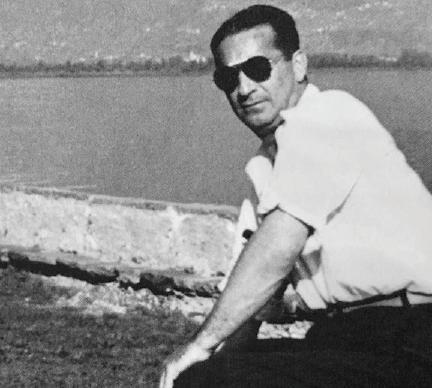

Today’s activist bookers face dramatically different hurdles, but Joanna Brown and Mark Freitas gave them all a running start with this 1990s concert series.
By MICCO CAPORALE

“HOMO.” That’s what the flyers would say, in four-inch-tall letters— dozens of them, stapled to lampposts, telephone poles, and bulletin boards in and around the Wicker Park neighborhood. Beneath that, they would add “CORE,” accompanied by a list of bands, a venue, and a date. It was the early 90s, and young queer punks Joanna Brown and Mark Freitas used those flyers to announce the kinds of shows they’d always dreamed of attending: rowdy all-ages rock nights where it was OK to be gay.
Homocore Chicago debuted on November 13, 1992, with a Czar Bar show by Toronto queercore band Fifth Column. The group’s drummer and guitarist, G.B. Jones, is also a filmmaker, and in 1985 she and director Bruce LaBruce founded influential Toronto queer punk zine J.D.s, which coined the word “homocore.” Brown and Freitas kept the series going till May 20, 2000, when it went out in a blaze of glory with Le Tigre’s Chicago debut at the Preston Bradley Center in Uptown—a show that not at all by coincidence also featured a screening of Jones’s short films.
Homocore Chicago hosted queer punk nights once or twice a month at its peak in the mid-90s—a time when most U.S. states still outlawed consensual sodomy, the AIDS epidemic was piling up bodies faster and faster, and gays were barred from the military. Same-sex marriage seemed an impossible fantasy, and there was little discussion of trans experiences—and even less about trans rights. Mainstream gay culture meant being open to assimilation: pushing popular culture’s boundaries just slightly to accommodate same-sex relationships. But being queer also meant having needs and ideas that mainstream institutions could never contain. Queerness was the mark of an outlaw.
Homocore was a way to say, “We’re here, we’re queer—and if you don’t like it, fuck you.”
Over its nearly decade-long run in Chicago, it booked the likes of Vaginal Davis, Bikini Kill, Pansy Division, Tribe 8, the Lunachicks, God Is My Co-Pilot, and Heterocide at a variety of venues—not just Czar Bar but also the Fireside Bowl, the Empty Bottle, and DIY spots such as the Autonomous Zone. By the mid-90s, Homocore organizations had started up in Detroit and Minneapolis, and in 1994 Homocore Chicago booked several shows in Manhattan clubs. Brown and Freitas’s labors over the years helped carve out space for a multifaceted, intersectional punk scene that continues thriving today.
Martin Sorrondeguy played more than his share of Homocore Chicago shows with his hardcore band Los Crudos. (He also fronts Limp Wrist, an explicitly queer group formed in 1998, but they gig infrequently due to living in di erent cities and thus didn’t participate in the series.) He says Homocore wasn’t the first local effort to connect punk and queerness. “Historically, in America, the early punk clubs were actually gay bars,” he explains. In Chicago specifically, he recalls a gallery from the 80s called Hook Torture, run by Chris Kellner—later a Homocore volunteer and now vice president of performance-art space Defibrillator, which hosted a 25th-anniversary Homocore retrospective in late 2017. Hook Torture played harder, more eclectic music than most gay bars, and since it wasn’t actually a bar, it wasn’t regulated as closely when it came to things like age restrictions and nudity.
“There was a guy named Naked Boy, and he’d walk around in combat boots naked with a tray, all ‘Can I get you a drink?’” Sorrondeguy says, laughing. “It was just edgier, so it got a lot of punk rockers involved.”
Brown and Freitas remember Czar Bar as existing in a similar regulatory gray area, not because it wasn’t a bar but because it was an archetypal dive, playing things fast and loose. Carding at the door was so inconsistent that underage fans could easily get into the shows—the kids just had to keep their drinking to a minimum, so they wouldn’t attract negative attention from the authorities. Nobody cared if there were gay people kissing in the bar, as long as they were racking up huge tabs.
Like Sorrondeguy, Brown connected queerness and punk early in life. In the mid-80s, as a teen in small-town Louisiana, she was one of three punks in her school. Everything in her town seemed organized around church dogma, which didn’t sit right with Brown—and because she felt out of step with that world, punk was a natural fit for her. One afternoon, while poring over an issue of New York Rocker, she saw Adele Bertei of the Contortions and Lesley Woods of the Au Pairs being celebrated as a punk-rock couple. She was stunned. Two women—together?
“I couldn’t believe anyone would be brave enough,” Brown says. “Much less have your photo taken.” She was galvanized by the idea of being so open—even brazen—about a same-sex partner. “I realized that there was an accessibility in punk music that wasn’t in anything else at the time.”
It’d be years before Brown, 53, would come to terms with her sexuality—in the late 80s,


she began identifying as queer, and in the early 90s she decided she was a lesbian. As she figured out the boundaries of her identity, punk gave her reference points for many of her political, social, and sexual desires. She spent her free time at a record store, and she developed a rich network of pen pals through punk zines. In the mid-80s, when she visited friends in a Chicago anarchist collective, she knew it was time to relocate. The social scene she found here was influenced by exciting music and progressive politics, so after a year at a local college, she dropped out—she guesses it was 1986 and that she was 18 or 19—and moved to Chicago.
Freitas, two years Brown’s junior, grew up just outside Detroit and was introduced to punk by scrambled broadcasts of a local cable show called Back Porch Video , which had launched in early 1984. Area radio stations would sandwich new wave, punk, and funk into the same programming blocks as disco, which was hanging on despite its decline in New York and Los Angeles. Disco also continued to waft through gay clubs like cheap cologne—a phenomenon Freitas describes as a “generational hangover.” It was so pervasive there, and for so much longer than in other cultural spaces, that in the early 90s he printed a limited run of Homocore Chicago shirts that read, “A lifetime of listening to disco is too high a price to pay for one’s sexual preference.”
By age 20, Freitas had come out as gay. Like Brown, he’d developed a network of pen pals through punk. Corresponding with G.B. Jones and other members of Toronto’s burgeoning queercore scene convinced him to travel to SPEW, a queer zine fest held in Chicago in 1991. It was the first time he could picture himself leaving home for good. He made more trips to Chicago, drawn especially by its house-music scene and by the opportunity to plug into
larger AIDs organizing e orts, and decided to move in early 1992.
Later that year, when Fifth Column reached out to Brown looking for a place to play, she thought, “How cool would it be to have a queer punk night?” Steve LaFreniere, a friend from SPEW, said he knew someone with the same idea, and Brown and Freitas soon met up at a Bikini Kill show at Czar Bar. They compared visions and strategies for bringing Fifth Column to Chicago—and in November, the show they booked kicked o Homocore Chicago. Not every band that played Homocore was queer or even punk. Homocore was less about enforcing boundaries on genre or identity and more about bringing together loosely a liated progressive ideas. While Homocore introduced the city to loudly queer bands such as Tribe 8, Team Dresch, and Pansy Division, the series also booked riot-grrrl acts whose relationship to queerness was less clear, including Huggy Bear, Sleater-Kinney, and the Lunachicks. When Brown and Freitas brought Bikini Kill to play in 1994, the band insisted that Los Crudos open for them. Bikini Kill drummer Tobi Vail had been corresponding with Sorrondeguy for years, and Brown and Freitas were fans of Los Crudos’ fierce political lyrics centering Latinx struggles—but as far as anyone at Homocore knew, nobody in the band was queer.
Sorrondeguy recalls, “Mark called us and goes, ‘Now I know now none of you are gay, but . . . ’ And I go, ‘Well, how do you know none of us are gay? Mark, I’m gay.’”
When Crudos formed in 1991, Sorrondeguy wasn’t yet out of the closet. “If I saw somebody that I could clock as being queer in a hardcore punk space in the 80s, I was afraid for them,” he says. The presence of Homocore Chicago, as well as visible queer punk activity in Toronto, San Francisco, and other cities, helped him
feel safe exploring his sexuality, and he eventually came out in the mid-90s. By then, queer punk projects looked to be on the decline. “It seemed like all of them almost simultaneously lost steam,” Sorrondeguy says. “Or something new had to happen. For me, it was Limp Wrist.” Los Crudos went on hiatus in 1998, and Sorrondeguy funneled his urgency to take up queer space into his new project. Limp Wrist has since become one of queercore’s most important bands, and this year it’s celebrating the 20th anniversary of its first show.
By the time Homocore Chicago called it quits with that Le Tigre show in 2000, what had started as a few dozen punks at a sketchy Wicker Park bar had grown into a few hundred people in the grand auditorium of a historic 1920s building. Over the years, Homocore shows had also spread out across the city, becoming less tied to bars and thus more accessible to younger audiences. At first Brown and Freitas had promoted their events with their bold flyers and a newsletter mailing list shared with them by LaFreniere—they’d send out a mailing to everyone on the list for every show. By the turn of the century, though, they’d gone digital with a labor-saving listserv and website.
The end of Homocore Chicago wasn’t the end of the city’s queer punk scene, of course. The queer-focused Fed Up Fest (FUF), which wrapped a four-year run in 2017, has been perhaps the most visible expression of Homocore’s legacy, but over the past two decades Chicago has seen a litany of shows and festivals in similar spirits.
In 2008, for instance, the city hosted an iteration of the Combating Latent Inequality Together Fest—better known as CLIT Fest. A women-centered DIY event that also spoke to intersecting concerns such as homopho-
bia and racism, CLIT Fest started in Minneapolis in 2004. It invited other cities to take up its banner, and there have been CLIT Fests in almost a dozen cities coast-to-coast, from Brunswick, New Jersey, to Portland, Oregon. In 2010, the Black and Brown Punk Show Collective (now the Black, Brown, and Indigenous Crew) formed to center the concerns of people of color in punk, and in 2012, it put on its first festival. In 2013, at Chicago’s second CLIT Fest, organizer Isabella Mancini had an idea: “We should do CLIT Fest but, like, all queer people,” she said to a friend as they packed up gear. The other woman immediately got excited: “We should do a queercore fest!”
Mancini found like-minded friends echoing similar desires, and soon they launched the Fed Up Fest Collective. By the time of the first FUF in 2014, “Don’t ask, don’t tell” had been repealed. Several states had legalized samesex marriage, and the Supreme Court had struck down any law barring federal recognition of those marriages. Trans visibility and rights were gaining ground thanks to online discourse, gradually moving o the Internet and into mainstream politics.
In Chicago, homosexuality bordered on the ordinary, which changed the stakes for organizers of shows that centered queerness.


While not every queer person felt equally safe or welcome in the local punk scene, FUF could take for granted that it was OK to be gay—thanks in part to the work of groups such as Homocore Chicago. So instead FUF looked at what resisting assimilation means today. How could it cultivate a gay scene that centered people marginalized by other parts of their identities—race, class, size, disability? The problems that faced organizers had evolved dramatically since the early days of Homocore, when finding a venue was a huge victory and the first priority was often simply a temporary escape from the oppression of the straight world.
At its inception, Fed Up Fest described itself as a “safe space,” then later as a “community of care” with an anticapitalist DIY ethos. This meant continually addressing concerns about the inclusivity of the event—providing child care, booking wheelchair-accessible spaces, et cetera. Former collective members reflect on FUF’s three-day weekends of music, panels, and workshops with words such as “magical,” “a rming,” and “life-changing.” But they also say “exhausting” and “emotionally draining” to describe the year of planning—and absorbing criticism—that went into every fest. According to Mancini, FUF dissolved because it was no longer carving out a space that needed to be carved out.
“I personally felt like we were doing the white version of what Black and Brown is doing,” she says, “and that approach felt unnecessary. The reality is, it’s not that hard to be a white gay person in Chicago. Let’s reflect on that.”
E. Ornelas, a member of the FUF collective in 2016 and 2017, found themselves bumping

up against the limitations of defining their politics through their queerness. “I’m veering further away from identity-based projects,” they explain. “I don’t think that those things inherently hold the critiques that I want them to. I’ll find myself in places with other queer folks or other people of color and realize those identities don’t inherently bring a certain politics that I once expected them to.”
The problem, put simply, is how to tackle one issue in a way that doesn’t aggravate another. “I still meet lots of queer folks that don’t quite know how to grapple with white supremacy,” Ornelas says. “I interact with lots of folks of color who aren’t indigenous who don’t know how to talk about decolonial politics. I talk to lots of folks who are anarchists or radicals who can’t think beyond critiques of capitalism and the state to other modes of oppression.”
At the same time, Ornelas is helping organize a similar queer-specific punk festival in Boston called Sheer Queer—though they realize that it’s less out of necessity and more about building community and having fun. The past few years have seen an explosion of queer-focused festivals, including the Londonbased Mighty Hoopla, Berlin’s Whole Festival, and Go West Fest in LA. While the events’ scales vary, they’re all a far cry from small DIY punk fests. The only thing they share is “queer” as a qualifier—an alternative to the more sharply defined “LGBTQ+” that can both create and challenge possibilities. The rise in “queer” events, as opposed to “LGBTQ+” events, may be a response to a perceived lack of diversity and gender parity in existing Pride celebrations and gay-oriented festivals. It may be a reaction to the dwindling of gay bars and
other established queer venues. Either way, it points to a real demand for space without clearly identifying who needs it.
“In the last couple years, I’ve literally heard straight people describe themselves as ‘politically queer,’” Mancini says. “That’s very o ensive to me. It’s also like, OK, what does a queer-specific space look like then?”
The FUF collective wouldn’t call planning the fest easy, though the readiness with which it could find a home for an openly and explicitly queer punk event is a testament to how much Chicago has changed. Much of what made FUF unique were its extensive self-imposed regulations—it had very specific ideas about who should perform at the fest and where it should happen. Bands had to be explicitly queer, for instance, with a punk spirit if not a punk sound, and venues had to be accessible and all ages. The collective would enforce other rules, too, such as “no white dreads in the space.” It made these gestures to underline who the fest wanted to center: queer people marginalized in multiple ways, with little reason to trust any institution. These gestures would have been impractical if not impossible in the Homocore days, but they recognize and respect queerness as something that marks people as unprotected by society.
FUF had some advantages over Homocore Chicago: the expediency of social media, a large pool of organizers to share responsibility, only three days to book rather than an open-ended series. But it also had to deal with the constant hum of outside feedback, a large group of personalities to bring to consensus, and a long list of lofty goals. Brown and Freitas owe the longevity of their project in part to their choice to keep it small and flexible.






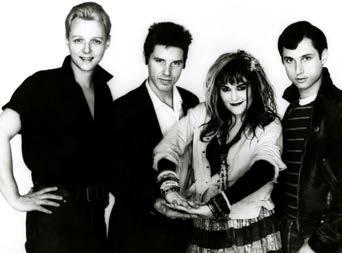





continued from 32
“Being just two people who trust each other helped us make decisions and avoid the infighting that often tears groups apart,” Freitas says. (He and Brown, who both live in Avondale now, remain close.) “But we had amazing help and guidance from others. That support kept us going, as did a sense of duty to the community we brought together and the bands we loved.” Homocore Chicago emerged when being gay in punk was dangerous. But existing on the fringe let Brown and Freitas create space for more than gay folks: women, people of color, and anyone else who felt unwelcome enough at mainstream rock shows to seize on a flyer that said “HOMO” in big letters. The strides made in the 90s have allowed younger organizers to be more specific and intentional when envisioning queer space—and that’s opened up more possibilities for what such a space can be. But for as long as punk remains the music of outsiders, queer punks will continue to ask: “Who doesn’t have a seat at the table? And what do we do if they don’t even want to sit there?” v
@miccoslays


Recommended and notable shows and critics’ insights for the week of June 20
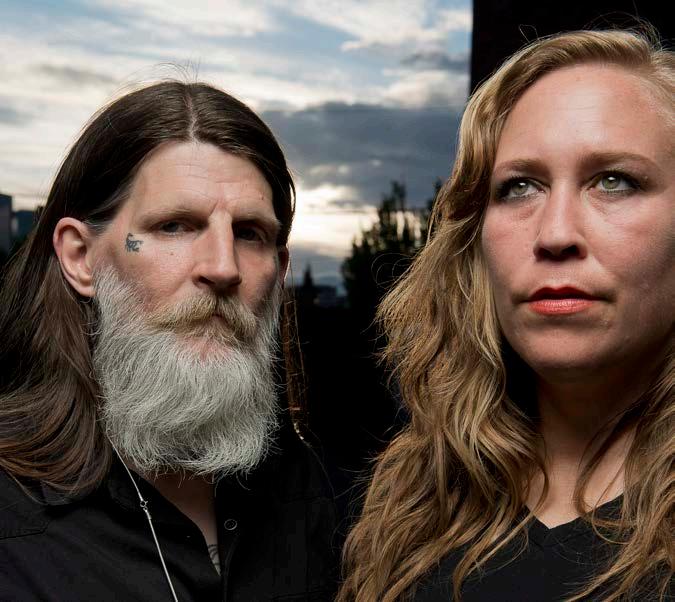
Bonelang Hxlt and Oxymorrons open. 8 PM, Metro, 3730 N. Clark, $16. b
Imagine rappers trying to sound like Queen, and you’re pretty close to Chicago hip-hop group Bonelang. The band’s driving forces, rapper Samy. Language and producer-vocalist Matt Bones, have always had a fondness for experimentation and grand gestures, borrowing from indie rock, jazz, and outre electronic music to create densely layered songs with disparate sounds. Bonelang have supersized that approach on their new selfreleased album, Sunny, Sonny . They perform their proggy, ever-changing compositions with robotic exactness, shi ing between breakneck raps and honeyed singing with whiplash-inducing swi ness— and their mini opuses sometimes feel like products of a marathon writing session for a musical theater production. Occasionally the group echo Queen’s most majestic moments with their sweeping sounds, particularly the radiant array of overdubbed vocals that opens “Plateauer.” And when Bonelang’s grandiose impulses and pop-forward songwriting skills sync up—as on the lithe nu-blues single “Anvil”—they sound like they could be the biggest band in the world. —LEOR GALIL
Rolling Stones See also Tuesday. 7:30 PM, Soldier Field, 1410 S. Museum Campus Dr., $120$496. b
WITH THE RECENT Full Upon Her Burning Lips, the three-decade career of Seattle drone band Earth seems to have come full circle: the record’s minimalist style is reminiscent of their 1991 debut EP, Extra-Capsular Extraction. Founded by guitarist Dylan Carlson in 1989, Earth helped pioneer droning, ambient forms of metal, often incorporating loads of distortion and feedback in their musical experiments. They released three full-lengths, including the landmark 1993 LP Earth 2, before experiencing a lull in output in the late 90s. Since the early aughts, Carlson has issued a steady stream of metal- and drone-adjacent albums in the company of a rotating cast of performers, with drummer Adrienne Davies his most constant musical companion. If transcendental simplicity has been the goal for Carlson and his shifting cohort, the cleaner tones and gluey pacing of Full Upon Her Burning Lips might rank as a new summit. It tamps down the overwhelming distortion of Earth’s earliest e orts and embraces some of the lighter sounds that swelled up on the band’s paired Angels of Darkness, Demons of Light releases earlier this decade. On Burning Lips, Carlson and Davies ditch the string accompaniment and occasional vocals for another clutch of tunes nearly devoid of levity. “The Colour of Poison” and “Descending Belladonna” both reference potentially life-ending toxins. And “Cats on the Briar,” as good a representation of the album as any other track, takes a gummy classic-rock stance, melodically descending toward that dark space inside Carlson that’s enabled him to shuttle gloom through his guitar for the past 30 years. —DAVE CANTOR
I was at a wedding last week when a rowdy, intoxicated record collector cornered me and exclaimed, “The Rolling Stones! Name another band that’s been going as long!” Usually I don’t play these sorts of games, especially at weddings, but this time I had to admit he’d stumped me—I don’t count reunion tours with only one or two original members (see: the Who). The only possible contender I could think of was ZZ Top, who still have all three founding members, but they started a full seven years a er the Rolling Stones formed in 1962—so there’s no contest. The Stones’ touring machine remains so unstoppable that over the past decade they’ve played the Middle East, Latin America, Asia, Australia, and Europe. And when Mick Jagger had a heart valve replaced in April, they promptly rescheduled their U.S. tour, which now kicks off with two dates in Chicago. I imagine Jagger will run around like
crazy, while Keith Richards’s near-corpse is wheeled onstage and planted in front of the crowd, guitar soldered in hand. Then there’s guitarist Ronnie Wood, a touring member since 1975, an official partner since 1990, and another survivor of decadence—a professional horse breeder and amateur philanderer, he’s been in and out of rehab possibly even more times than Keef, and when he was diagnosed with lung cancer in 2017, he refused chemo because he’d lose his dyed-jet-black-but-still-full head of hair. As for drummer Charlie Watts, well, what can I say? This great, straight-faced, no frills, time-keeping monkey man is the rhythmic soul of the machine. Granted, crucial members have passed or moved on (founder Brian Jones died in 1969, godly lead guitarist Mick Taylor lasted from ’69 till ’74, and original bassist Bill Wyman bowed out in ’93), and making albums hasn’t seemed as important to the band in recent years as hitting the road. But their most recent LP, 2016’s Blue and Lonesome, hit number four on the Billboard charts and made it to number one in the UK despite its obvious blues-covers-only shtick. So what do I know? I have to admit, I haven’t completely enjoyed a Stones album since 1981’s Tattoo You (an odds ’n’ sods collection of souped-up unreleased songs), but that’s OK— according to recent set lists, the Tattoo You single “Start Me Up” is the newest tune the Stones are playing these days. The rest of the show leans heavily on their golden 70s period, though late-60s monster singles such as “Jumpin’ Jack Flash,” “Sympathy for the Devil,” and “Street Fighting Man” make the cut too. You can also anticipate a smattering of their nasty, not-suitable-for airplay rockers (“Bitch,” “Midnight Rambler”) and some bloated anthems (“It’s Only Rock ’n Roll”), as well as Keef singing on a couple of deep cuts. The Stones definitely have a catalog massive enough to mix it up—and given the huge amount they charge for concert tickets, they’ll surely pull out all the stops their aching bodies can handle. Seriously, Mick, take it easy—you just had heart surgery! —STEVE KRAKOW
Ruido Fest See also Saturday and Sunday. With Hombres G & Enanitos Verdes, Dorian, Tomasa del Real, Vanessa Zamora, La Beriso, Malafacha, Quinto Imperio, Iron Years, Los Gold Fires, Juliocesar, and Pure Remedy. 2 PM, Union Park, 1501 W. Randolph, $74.99. b
From Friday, June 21, though Sunday, June 23, the fi h annual Ruido Fest comes to Union Park








to serve up contemporary Latinx sounds and tasty treats that go well beyond typical festival fare (with any luck, the zucchini-blossom tacos in handmade tortillas will make an appearance again this year). Latinx music has 21 Spanish-speaking countries, the U.S., and a multitude of musical heritages past and present to draw from, so it’s as wildly eclectic as they come. It’s also trilingual—Spanish, English and Spanglish are all sung and spoken here. This year’s headliners include the rock-en-español veteranos behind pan-Latino hits of the 70s and 80s, among them Argentina’s Enanitos Verdes and Mexico’s El Tri, but overall the three-day festival shares a fascinating present-day perspective on the artists and sounds that make up the Latinx musical identity. There’s something for everyone: acts rooted in tradition, such as all-woman New York mariachi band Flor de Toloache, crowd-pleasing Colombian swingpop balladeers Monsieur Periné, and rising Chilean reggaeton star Tomasa del Real, as well as artsy experimental sounds, including the smart multihued dream pop of Ecuadorian-American Helado Negro, the political performance art of Brooklyn-based Dominican Jarina de Marco, and the vocal electronica of Colombia’s Ela Minus. The bill features up-and-coming locals too, most notably soul-R&B singer-songwriter Tatiana Hazel. And closing down Ruido Fest on Sunday night is a longtime favorite on both sides of the border, founded in Sinaloa, Mexico, in the late 60s and transplanted to San Jose, California: the kings of norteño accordion, Los Tigres del Norte. —CATALINA MARIA JOHNSON
Astronoid Infinity Shred and Outrun the Sunlight open. 7 PM, Reggies’ Rock Club, 2105 S. State, $15. 17+
Four-piece Massachusetts postmetal band Astronoid took three years to follow up their 2016 debut, Air , with a new full-length, a self-titled album that dropped in February on Blood Music. That’s because the type of music they play doesn’t just fall together; it takes a lot of work. Astronoid’s sound is a dreamy fusion of metal, prog, and shoegaze, and because they have roots in black metal, they use its dark satanic rhythms as a foundation atop which to build risers in the sky for a celestial choir. The band’s delicate, elegant lyricism is supported by steel-girded architecture with ambitious structures, and their Devin Townsend-esque guitar antiheroism and unabashed romanticism make them accessible for indie rockers as well as fans of classic and power metal (frankly, in a few places on the new album, they sound just a Tolkien reference away from Blind Guardian). Astronoid will be one of the last few releases on Blood Music, an arty Finnish metal and darkwave label known for its deluxe box sets (judging by the stressed-out personal statement that founder J issued to announce its impending closure, it’s a victim of its own success). But regardless of which label carries Astronoid forward from now on, they remain a band to watch: their music is already a great pleasure, and they seem capable of reaching even greater heights.
—MONICA KENDRICK

Divino Niño Bunny, Girl K, Valebol, and DJ Paulcherry69 open. 9 PM, Empty Bottle, 1035 N. Western, $10. 21+
Chicago indie rockers Divino Niño make languid music that’s far from lazy. On their new debut album, Foam (Winspear), they perform their relaxed songs with energetic precision, landing on crucial notes like exclamation points without disrupting the laid-back mood. But don’t let the vibes fool you: these guys are perfectionists. According to singer-guitarist Camilo Medina, Divino Niño scrapped three different attempts at a debut album before finally recording Foam , which they’re celebrating with this release show. Chill styles of rock seem to be en vogue with half the city’s newer indie bands, but Divino Niño’s attention to detail
and love of exploration make them stand out. On Foam those tendencies come out in their use of chintzy looped drum machine (“Flamingo”), tasteful splashes of shoegaze guitar (“Coca-Cola”), and light disco touches (“Melty Caramelo”). Medina and bassist-vocalist Javier Forero were born in Bogotá, Colombia, and Latin American musical touches crop up throughout the album, most notably on the woebegone, sweetly solemn Spanish-language single “Maria.” Led by that tender track, Foam cements Divino Niño’s place as bright stars in the firmament of Chicago indie rock. —LEOR GALIL
Ruido Fest See Friday. With El Tri, Fobia, El Gran Silencio,
Find more music listings at chicagoreader.com/soundboard

tor!, Ultima Experiencia, Stendal, Tatiana Hazel, Pkdores, Kelroy, DJ Chava, DJ Flaco, DJ Tobi, and DJ Cheech. 2 PM, Union Park, 1501 W. Randolph, $74.99. b
Dreamdecay Wand headlines; Dreamdecay and Wet Piss open. 9 PM, Sleeping Village, 3734 W. Belmont, $18. 21+
Seattle postpunks Dreamdecay showed they know how to make brawny noise on their 2013 debut fulllength, Nvnvnv . On the follow-up, 2017’s Yú (Iron Lung), they treat that noise like Silly Putty, unloading dilated feedback and clustered, chaotic unison bursts in quick succession, and often mitigating heavy walls of sound with near silences in the same song. Dreamdecay also explore their melodic side on Yú , using bruising, distorting riffs to hypnotize listeners, not just whip them into a mosh pit. Slow burner “Ian” rests on an unhurried, barely accompanied guitar melody shaded with psych rock and Krautrock; it sounds almost like a raga—at least till the rest of the band crashes in and launches the song into the sun. —LEOR GALIL
Earth See Pick of the Week, page 35. Helms Alee opens. 8:30 PM, Empty Bottle, 1035 N. Western, $17. 21+
Ruido Fest See Friday. Los Tigres del Norte, Los Autenticos Decadentes, Francisca Valenzuela, Inspector Silverio, Ela Minus, Jarina De Marco, Los Vinagres, Juan Son, Camilo Septimo, Diamante Electrico, Mamita Peyote, Sonorama, French Police, Fancy Macho, De Lein, Benny Analog Signals, and Stereomotor. 2 PM, Union Park, 1501 W. Randolph, $74.99. b
Wadada Leo Smith & the AACM Great Black Music Ensemble 7 PM, Logan Center for the Arts, 915 E. 60th, $20. b
Four years a er its golden anniversary, the Association for the Advancement of Creative Musicians

asserts a contemporary presence that extends its legacy. The organization first convened on Chicago’s south side as a collective, community- rooted effort to create possibilities for African American musicians of all ages and experience levels to present their own music. In 2018 the AACM Great Black Music Ensemble—a variably sized group whose repertoire includes new work as well as pieces by AACM members—played monthly concerts at the Stony Island Arts Bank with guests such as Makaya McCraven, Marvin Tate, and Ben LaMar Gay. For tonight’s fund-raiser concert, the GBME will shi to the Logan Center for the Arts performance hall and welcome a venerated trumpeter and early member of the AACM: Wadada Leo Smith. Among the first things Smith did when he moved to Chicago in 1967 was ring up multi-instrumentalist Anthony Braxton and start playing and sharing compositions with him and other AACM members. He didn’t stick around long—Smith, Braxton, and AACM violinist Leroy Jenkins left town for Paris in 1969—but he’s regularly returned to perform with AACM-associated groups ever since. Smith’s latest album, Rosa Parks: Pure Love (TUM), is an oratorio that weaves an international quartet of woman singers, string and trumpet quartets, and samples of music by his old traveling companions Braxton and Jenkins into a quiltlike assemblage of reflections on the mid-20th-century civil rights movement. But for this appearance, he will first present material from Solo: Refl ections and Meditations on Monk (TUM), an unaccompanied trumpet recital that explores and extends the sublime melodies and meaningful silences of Thelonious Monk’s music. In the second set, Smith will conduct the AACM Great Black Music Ensemble’s performances of Joy: Spiritual: Fire, a piece he composed for his electric-guitar-oriented band Organic, and the orchestral Queen Hatshepsut , an orchestral piece dedicated to the female pharaoh from the 15th century BCE. —BILL MEYER
MONDAY24
Cuco Also Fri 6/28 at the same venue. Triathalon opens. 7 PM, Metro, 3730 N. Clark, sold out. b
It was only a few years ago that 21-year-old Los Angeles singer-songwriter/producer Omar






Find more music listings at chicagoreader.com/soundboard





Banos, aka Cuco, began messing around with music software after school. He quickly hit on an original and unexpectedly successful style of bedroom dream pop, with lyrics that mix Spanish and English and meander nonchalantly between passionate Latin balladry and sly, hip humor. His signature song, 2017’s “Lo Que Siento,” has a cheesy synth groove and casually corny lyrics (“I hope you know I miss you / From my head I can’t dismiss you”) and ends with a gorgeous mariachi horn coda. Over the summer following the track’s release, Cuco racked up 350,000 monthly listeners on Spotify. His latest single, “Hydrocodone,” touches on the Beatles in its psychedelic, distorted tunefulness and on the Smiths in its melodramatic insularity: “The tainted paint that’s on the wall,” Cuco laments, “crumbles and corrodes, rumbling softly as it hits the floor.” The single is part of the run-up to Cuco’s Interscope debut, Para Mí (out July 28), for which he reportedly received a seven-figure advance. The label is obviously betting he has an even bigger future ahead of him, and I certainly hope so too; it would be great if the soundtrack of summer 2019 included this nerdy Mexican-American indie oddball who sings about love. —NOAH BERLATSKY
Big|Brave Dreadnought and Lume open. Sweet Cobra DJs between sets. 6:30 PM, Subterranean, 2011 W. North, $10. 17+
Since forming in 2012, Montreal’s Big|Brave have strived to balance volume with silence, harshness with beauty, and stoic minimalism with full-on intensity, using tools such as space, breathlike rhythms, and a thundering low end that only seems more cavernous next to the clear, striking alto voice of singer-guitarist Robin Wattie. Each of the experimental trio’s four albums has been better than the one before, and the recent full-length A Gaze Among Them cements their transformation from band on the rise to heavy-music essential. Dramatic shapes and shi ing moods have long been core to Big|Brave’s sound, but up till now they’ve preferred esoteric lyrical themes, with Wattie intentionally singing without much enunciation to give the listener more space for interpretation. A Gaze Among Them takes a more direct approach, addressing interpersonal and social power dynamics. Anchored by a throbbing drumbeat, “Holding Pattern” confronts the deeply ingrained racism and cultural supremacy that whitewashes atrocities and mass violence and even drives self-proclaimed allies to steer the focus to the needs and feelings of white people. “Sibling” is an intimate exploration of how two people can be made to feel alienated from each other even while facing similar obstacles: “How strange it was, so strange / What we each needed to be / What we each were made to believe / What we each chose to see,” Wattie sings over a seismic guitar rhythm. No matter how cerebral things get, though, Big|Brave’s music hits first and foremost through the ears and the soul, and the band matcheven their most agonizing builds with shimmering moments of relief. —JAMIE
LUDWIG
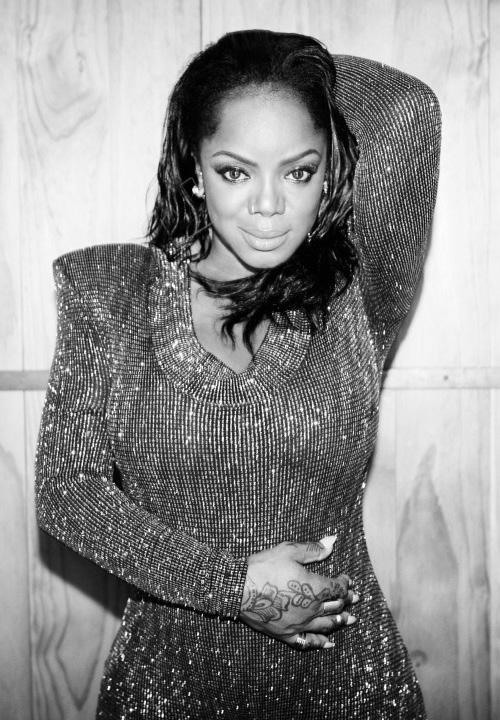
Leela James 8 PM, Thalia Hall, 1807 S. Allport, $32-$55. 17+
When Leela James released her first album, A Change Is Gonna Come (Warner Bros.), in summer 2005, she was widely heralded as the newest incarnation of the classic soul diva from times gone by. This would be a lot of hype for anyone to live up to, but James obviously had the chops to do it. She was right in the vanguard of the entire neosoul trip of that era, and since then, she’s enjoyed fairly steady success. She’s changed up labels a few times, and she’s altered her sound a little along the way; on her previous album, My Soul (Stax), she flirted with hip-hop, adding trap beats and chanted, staccato verses to her traditional bag of tricks. Her latest single, “That Woman,” conjures up the spirit of heavy-metal funk queen Betty Davis—her aggressive vocals land halfway between Davis and Chaka Khan, while amped-up guitars help her fire shots at some nemesis who calls her “that woman” rather than by her name. James has always maintained allegiance to the classic soul sound, but she’s simultaneously sought new ways to present herself, and on “That Woman” she adapts well to the song’s hard-rock vibes—you don’t get the impression that she’s just trying on a new style to see how it fits. There’s no word of another release at this time, but it would be interesting to see if she pursues a similar direction on her next album. If you can be a chameleon but stay true to your roots, then you’re definitely onto something—and James fits the description.
—JAMES PORTER
ROLLING STONES See Friday. 7:30 PM, Soldier Field, 1410 S. Museum Campus Dr., $120$496. b v
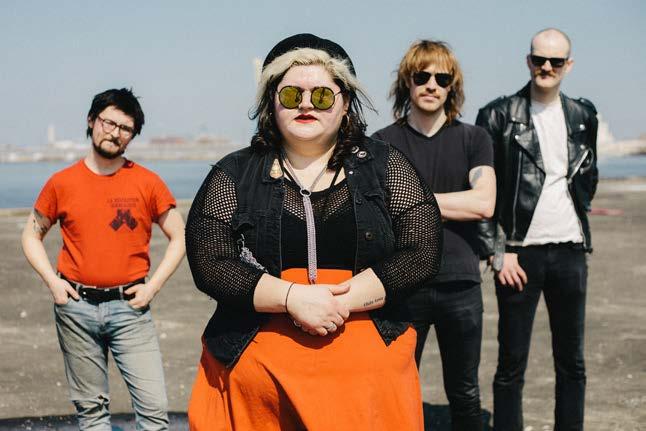
African/Caribbean International Festival of Life 7/4-7/7, noon, Washington Park b Aldous Harding 9/24-9/25, 8:30 PM, Empty Bottle, on sale Fri 6/21, 10 AM
Kris Allen 11/20, 8 PM, City Winery, on sale Fri 6/21, noon b Anderson .Paak 7/25, 7 PM, House of Vans, 18+ Arkona, Metsatoll, Wind Rose, Astillian 9/23, 6 PM, Reggies’ Rock Club, 17+
Dan Baird & Homemade Sin 8/8, 8:30 PM, FitzGerald’s, Berwyn, on sale Fri 6/21, 11 AM Banks 7/11, 7 PM, House of Vans, 18+ Bay Faction, Girl K, Mt Pocono
8/30, 7 PM, Subterranean b Bears in Space, Harry Cross 8/10, 10 PM, Smart Bar Big Wreck 10/10, 8 PM, Bottom Lounge, 17+ Bird Motel, Marquees, Avenue not Street, Cat & the Curiosity 6/30, 5:30 PM, Bottom Lounge b Black Midi, Ono 7/20, 9 PM, Hideout Black Mountain, Dommengang, Majeure 9/24, 7 PM, Lincoln Hall, on sale Fri 6/21, 10 AM, 18+
Black Taffy, New Canyons, Metavari 8/19, 8:30 PM, Empty Bottle F
Rachel Bloom 9/21, 8 PM, Chicago Theatre, on sale Fri 6/21, 10 AM b
Catfish & the Bottlemen 10/5, 8 PM, Aragon Ballroom, on sale Fri 6/21, 10 AM, 17+ Chai, Varsity, James Swanberg 7/19, 9 PM, Empty Bottle Chicago Pride Tea Dance 6/30, 4 PM, Smart Bar F
!!! 10/6, 8 PM, Lincoln Hall, on sale Fri 6/21, 10 AM, 18+
Christian French, Astn 9/5, 8 PM, Subterranean, 17+
Cigarettes A er Sex 10/16, 8:30 PM, Thalia Hall, on sale Fri 6/21, 10 AM, 17+
City of Djinn, Mykel Boyd, Swim Ignorant Fire, Naxo 7/28, 8:30 PM, Empty Bottle Converge 8/24, 7 PM, House of Vans, 18+
Desert Liminal, Lake Mary, Slow Planes 8/6, 8:30 PM, Empty Bottle
Dionysia 10/24, 8 PM, Reggies’ Music Joint
Dreamgirl 9/20, 9 PM, Empty Bottle
Franco Escamilla 11/22, 8 PM, Rosemont Theater, Rosemont, on sale Fri 6/21, 10 AM Family Reunion 8/23, 8 PM, Schubas, on sale Fri 6/21, 11 AM b
Frankie Cosmos 9/23, 7:30 PM, Thalia Hall, on sale Fri 6/21, 10 AM b
Glitter Moneyyy, Showyousuck, J Bambii 7/11, 8:30 PM, Empty Bottle
Grapetooth, Lala Lala, Title TK DJs 7/19, 10 PM, Metro, 18+ Hail the Sun, Strawberry Girls, Royal Coda, Vis 10/5, 7:30 PM, Subterranean, 17+
Heartsfield 8/31, 9 PM, FitzGerald’s, Berwyn, on sale Fri 6/21, 11 AM
Helmet 11/27, 8 PM, Bottom Lounge, 17+
Hitsleep, Highway English, Od Jo, Romancoke 7/19, 7:30 PM, Bottom Lounge, 17+
Hozier, Angie McMahon 11/3, 8
PM, Chicago Theatre, on sale Fri 6/21, 10 AM b
Hucci 8/15, 10 PM, Spy Bar Imfact 8/11, 6:30 PM, Concord Music Hall, 17+
It Looks Sad 8/6, 7 PM, Subterranean, 17+
Pinegrove 9/11, 7:30 PM, Thalia Hall, on sale Fri 6/21, noon b Planet Booty, Cell Phones, Handsome Naked 7/22, 8 PM, Subterranean, 17+
Prairie Fires, Dra week, Papi Legusta 7/13, 8:30 PM, GMan Tavern Queen! 7/7, 10 PM, Smart Bar Rad Payoff, Weird Night, Shutups, Permanent Resident 7/19, 10:30 PM, GMan Tavern Rapture 7/27, 7 PM, House of Vans, 18+
Raw Chicago: Arise showcase 7/24, 7 PM, Metro Red Elvises 9/27, 10 PM, FitzGerald’s, Berwyn, on sale Fri 6/21, 11 AM
Regrettes 10/11, 7 PM, Metro, on sale Fri 6/21, 10 AM b Shawan Rice 6/27, 8 PM, Bourbon 'N Brass, Evanston Chase Rice, Cale Dodds 9/28, 8 PM, the Vic, on sale Fri 6/21, 10 AM, 18+
Iya Terra 11/1, 9 PM, Schubas, on sale Fri 6/21, noon
Dermot Kennedy 10/12, 7:30 PM, Riviera Theatre, on sale Fri 6/21, 10 AM b
Kick the Cat, Dan Bitney & LeRoy Bach duo 8/7, 8 PM, Martyrs’
Kublai Khan, Orthodox 9/15, 7:30 PM, Subterranean, 17+
Little Feat 10/13, 8 PM, the Vic, on sale Fri 6/21, 9 AM, 18+
Love Fame Tragedy 9/21, 8 PM, Subterranean, 17+
Luke Temple, Meernaa 9/13, 9
PM, Empty Bottle, on sale Fri 6/21, 10 AM
Malci, Joshua Virtue, Ruby Watson, Davis 6/30, 8 PM, Hideout
Briston Maroney 11/20, 7 PM, Schubas, on sale Fri 6/21, 10 AM b
Meek Mill, Future, YG, Mustard, Megan Thee Stallion 8/31, 7 PM, Hollywood Casino Amphitheatre, Tinley Park, on sale Fri 6/21, 10 AM
Rhett Miller 9/16, 8 PM, City Winery, on sale Fri 6/21, noon b
Moon Boots, Garrett David, T. Mixwell 8/3, 10 PM, Smart Bar Moonlight Disco . Chris Malinchak 7/19, 9 PM, Virgin Hotel
Morglbl, Devil's Staircase, Pavlov3 9/4, 7 PM, Reggies’ Music Joint
Mt. Joy 12/30, 8 PM, Metro, on sale Fri 6/21, 10 AM, 18+
Muna, Chelsea Jade 10/17, 7:30
PM, Logan Square Auditorium, on sale Fri 6/21, 10 AM b
Phil Ochs song night 9/15, 6
PM, Szold Hall, Old Town School of Folk Music b Orchard Lounge 8/2, 10 PM, Smart Bar
Madeleine Peyroux 10/22, 8
PM; 10/23, 8 PM, City Winery, on sale Fri 6/21, noon b
Never miss a show again. Sign up for the newsletter at chicagoreader. com/early
School of Folk Music b Trqpiteca Queer Pride Chicago 6/30, 3 PM, Ping Tom Memorial Park Fb Veronica Vasicka, Jeff Derringer 8/9, 10 PM, Smart Bar Loudon Wainwright III 10/27, 7 PM, Maurer Hall, Old Town School of Folk Music b Werewolves at Hour 30, Polish Gi s, Leah Capelle 6/28, 8:30 PM, Bottom Lounge, 17+ White Denim 11/9, 8 PM, Metro, on sale Fri 6/21, 10 AM, 18+
Rising Appalachia 11/14, 7 PM, Maurer Hall, Old Town School of Folk Music b Joe Robinson 8/3, 8:30 PM, FitzGerald’s, Berwyn, on sale Fri 6/21, 11 AM
Rock ’n Roll Market 8/17, noon, East Room Rookie, Hex Girls, Criminal Kids 7/29, 7 PM, GMan Tavern RP Boo, DJ Spinn, and more 7/20, 10 PM, Smart Bar Paulina Rubio 9/25, 8 PM, Chicago Theatre, on sale Fri 6/21, 10 AM b Shintaro Sakamoto 10/18, 8 PM, Subterranean, on sale Fri 6/21, 10 AM, 17+
Bob Seger & the Silver Bullet Band 10/19, 8 PM, United Center b
She Drew the Gun 9/20, 9 PM, Beat Kitchen, 17+
Sheer Mag 9/6, 9 PM, Lincoln Hall, on sale Fri 6/21, 10 AM, 18+
Sick Gazelle, Spiral Galaxy, Potions x Flux Bikes, CC Crain 7/22, 8:30 PM, Empty Bottle F Slackers 11/14, 7 PM; 11/15, 7 PM; 11/16, 7 PM, Reggies’ Rock Club, 17+
Smooth Hound Smith 10/18, 8:30 PM, FitzGerald’s, Berwyn, on sale Fri 6/21, 11 AM Spencer Sutherland 8/17, 6 PM, Beat Kitchen b Taco, Will Da’ville, Marcellis, Nate Gramz, Identical Eleven 8/16, 8 PM, Bottom Lounge, 17+
Taking Back Sunday 7/13, 7 PM, House of Vans, 18+
Throwaway, Cold Beaches, Saatjak 8/8, 8:30 PM, Empty Bottle
Title TK DJs, Sasha No Disco 7/19, 10 PM, Smart Bar Toro y Moi, Channel Tres 11/1, 7:30 PM, Riviera Theatre, on sale Fri 6/21, 10 AM, 18+ Tribute to Mercedes Sosa 8/17, 8 PM, Szold Hall, Old Town

A furry ear to the ground of the local music scene
Chelsea Wolfe, Ioanna Gika 10/24, 9 PM, Metro, on sale Fri 6/21, 11 AM, 18+
Work in Progress . Gaten Matarazzo 8/10, 6 PM, Subterranean b Xylo 7/27, 7 PM, Chop Shop b
Sleater-Kinney 10/18-10/19, 8 PM, Riviera Theatre, 10/19 show added b
Big Business, Meat Wave 9/8, 8:30 PM, Empty Bottle Bird and the Bee, Alex Lilly, Samantha Sidley 8/12, 8 PM, Sleeping Village Deep Purple 10/18, 8 PM, Rosemont Theater, Rosemont b FM-84 6/29, 9 PM, Lincoln Hall, 18+ Jazz Institute of Chicago's Birthday Bash with Makaya McCraven Quintet 6/28, 7:30 PM, the Promontory b Oh Sees, Prettiest Eyes 10/1110/12, 8:30 PM, Thalia Hall, 17+ Okan 8/14, 8:30 PM, Maurer Hall, Old Town School of Folk Music Fb Panteón Rococó 7/19, 8 PM, Aragon Ballroom, 18+ Papa Roach, Asking Alexandria, Bad Wolves 8/23, 7 PM, Aragon Ballroom, 17+ Chuck Prophet & the Mission Express 7/19, 8 PM, City Winery b Psychedelic Furs, James, Dear Boy 7/23, 8 PM, Aragon Ballroom, 17+ Purling Hiss, Writhing Squares 7/18, 9 PM, Hideout Sabaton, Hammerfall 10/26, 8 PM, the Vic b Son Volt 7/13, 8 PM, SPACE, Evanston b Sonny Falls, Maneka, Floatie 7/6, 9:30 PM, Sleeping Village Waterboys 9/29, 5 and 8 PM, Maurer Hall, Old Town School of Folk Music b v
LOCAL PRODUCTION duo Midas Wells and Chris Kramer , aka Tensei , combine frothy spiritual jazz, warm hip-hop beats, and vocals from a far-flung crew of rappers and singers. In January, Tensei dropped the excellent album Constellate , whose buzzy atmosphere recalls the Soulquarian sound of the late 90s—lead track “Liquid Tongues,” with singing from former Chicagoan A. Billi Free , casts an astral glow. Free, now based in New Mexico, has scheduled an August release for her album I Luma, which features Tensei’s beats and an Angel Bat Dawid guest turn. On Friday, June 21, Tensei perform with Free at Cafe Mustache’s Open Beats series; on Sunday, June 23, they back her at Smart Bar On Thursday, June 13, Derrick Harris , the beloved Chicago house producer and vocalist better known as Sleezy D, died of kidney failure at age 54. Harris is most famous for the sinister acid-house single “I’ve Lost Control,” coproduced in 1984 with longtime friend Marshall Jefferson and punctuated with Harris’s maniacal screams; legendary DJ Ron Hardy frequently played it even before Trax released it as a 12-inch in ’86. Jefferson has launched a GoFundMe to raise $20,000 for Harris’s funeral expenses—any surplus will go to Harris’s family. On Thursday, June 20, Gospel Truth Missionary Baptist Church (10015 S. Halsted) hosts Harris’s wake (11 AM) and funeral (noon).
When Earth, Wind & Fire founder Maurice White died in 2016, Reader critic Peter Margasak noted the group’s deep roots in Chicago—and for this wolf, that’s enough to bestow honorary local citizenship on fellow EWF vocalist Philip Bailey. Who cares if he’s from Denver? On Saturday, June 22, the falsetto master performs a free solo set at Dusty Groove to celebrate his new Verve album, Love Will Find a Way—no word yet on whether he’ll arrive in a helicopter like in the ridiculously awesome video for “Easy Lover.” Bailey also plays City Winery on Sunday, June 23. —J.R. NELSON AND LEOR GALIL
Got a tip? Tweet @Gossip_Wolf or e-mail gossipwolf@chicagoreader.com.
Hemp Gummies offer users fast acting relief from joint and muscle discomfort that’s absolutely delicious; now available in the U.S. without a prescription
Chris Laufstein Associated Health Press
BOSTON — For millions battling daily discomfort, this news couldn’t be more exciting.
A new relief extract found in hemp is available across the nation and can be purchased without a prescription.
And the best part, it comes to users in the form of a tasty gummy bear.
So you can say goodbye to pills, needles, and creams!
Hemp Gummies, contains pure concentrated doses of hemp extract, which can help relieve joint discomfort along with general muscle aches and soreness.
It also calms, relaxes, and eases tension all over the body.
Exciting new scientific research shows that hemp extract contains special relief molecules called cannabinoids which bind to receptor cites in the brain and body. When taken orally, hemp extract activates these receptors, and soothing comfort begins to take form.
Recent developments, like the US Farm Bill, allow Hemp Gummies to be sold in the U.S. without a prescription. And since it can’t get you high it’s flying off the shelves.
“Most people have no idea that pure hemp extract, like Hemp Gummies, can be purchased. And that’s because it contains no THC,” explains Dr. Joe Wezensky, who sits on the scientific board at Medici Quest.
“Instead, it’s bursting with special relief compounds called cannabinoids. These cannabinoids target special receptor cites all over the body but are most prominent in the brain.”
“This system of cannabinoids and the receptors that they bind to are called the Endocannabinoid System and science is just now unlocking its amazing medical potential”
“In fact, the initial research has been so impressive that hemp extract is now patented by the US Government (patent #6,630,507).”
“It’s also being used by athletes in the NFL, MMA among other physically demanding sports as a safe alternative.”
One of the biggest mistakes people make when talking about hemp extract is mixing it up with marijuana.
Although the two fall under the same plant category, cannabis sativa, they have completely different effects on the body.
Remarkably, hemp extract is available in the U.S. and can’t get you high (ever!). That’s because there is no THC in it, the chemical that
makes you feel “buzzed”.
“Although you can’t get high from Hemp Gummies, you can start feeling the effective relief,” explains Wezensky.
“Most people have very low cannabinoid levels, which is why they constantly ache. Hemp Gummies boosts cannabinoid levels extremely fast, helping relieve lingering joint discomfort ...muscle tension...and general soreness. It also eases stress and elicits amazing relaxation without feeling impaired. And what most people really love is they’re delicious and so easy to take on the go.
Clinical studies show that cannabinoids and the receptors that they bind to are found all over your body.
However, they are most concentrated in your brain. That’s why it has such a profound impact on how you feel, especially your level of comfort.
These cannabinoids and their receptors work like “lock and key” and bind to each other triggering important biological processes.
Hemp Extract, like Hemp Gummies, may help users with...
• Aching joints
• Sore muscles
• Cramping
• Leg and foot discomfort
• Restlessness
• Stress
• Sleep problems
The incredible impact cannabinoids have on your health is directly related to the primary goal of your Endocannabinoid System, which is to maintain a balance in the body, a physiological state known as homeostasis.
Research shows that maintaining this balance is a key to vitality and healthy bodily function.
The cannabinoids found in Hemp Gummies, hemp extract, replenish your levels quickly, easing discomfort over the entire body.
Plus, by keeping your body in balance (homeostasis), Hemp Gummies also helps to relieve stress and tension...improve sleep... and even promote relaxation and calmness.
Not Yet Sold in Stores
Hemp extract that is derived from industrial hemp, like Hemp Gummies, is available nationwide. However, several major

pharmaceutical companies are currently testing hemp extract in clinical settings, which means it may require a prescription in the future. It’s advised to get Hemp Gummies while you can.
A large percentage of men and women using Hemp Gummies experience truly amazing results. That’s why it’s now being sold with a guarantee that goes way beyond the industry standard.
“We can only make this guarantee because we are 100% certain our customers will be satisfied,” says Wezensky. We want to take full risk off consumers. So in addition to offering substantial discounts for first time customers, we also make them a huge promise that ensures they don’t have to risk a cent.”
Here’s how it works: Take Hemp Gummies exactly as directed and you must be thrilled with the results! Otherwise, simply return the empty bottles within 90 days. Then, the company will refund your money plus give you an extra $10 for having tried the product.
This is the official nationwide release of Hemp Gummies hemp extract in Illinois. And so, the company is offering a special discount supply to anyone who calls within the next 48 hours.
An Order Hotline has been set up for local readers to call. This gives everyone an equal chance to try Hemp Gummies hemp extract.
Starting at 7.00AM today, the discount offer will be available for 48 hours. All you have to do is call TOLL FREE at 1-800-737-1027. The company will do the rest.
Important: Due to hemp extracts growing popularity and recent media exposure, phone lines are often busy. If you call and do not immediately get through, please be patient and call back.
THESE STATEMENTS HAVE NOT BEEN EVALUATED BY THE FOOD AND DRUG ADMINISTRATION. THIS PRODUCT IS NOT INTENDED TO DIAGNOSE, TREAT, CURE OR PREVENT ANY DISEASE.
SAVAGE LOVE
A husband whose wife won’t even kiss him wants to know what gives, and more.
By DAN SAVAGE

Q : I found your column a er a Google search. I saw your e-mail address at the bottom and was hoping for some insight. My issue is this: Two years into our 23-year marriage, my wife declared that she didn’t want to kiss me or perform oral on me. Several years ago, she had an affair and confessed that she not only kissed this other person but performed oral on them as well. Why them and not me? Should I just go find someone willing to do what I want? I have a high sex drive, but I find that I don’t want to sleep with my wife anymore because there’s never any foreplay and a few minutes into it she’s telling me to hurry up. I don’t feel wanted, and honestly, I no longer desire her. What do you make of this? —H URTING UNWANTED HUSBAND
A : Before telling you what I make of your e-mail, HUH, I want to tell you what I wish I could make out of your e-mail: a time machine. If I could turn all those pixels and code and whatever else into a working time machine, I’d drag your ass back to 1996 (and try to talk you out of marrying your wife) or 1998 (and try to talk you into leaving her a er two years of marriage). But since time machines aren’t a thing—at least not yet—we’ll have to talk about the here and now.
Your wife isn’t attracted to you, and never was, or hasn’t been for a long, long time. And now the feeling is mutual—you aren’t attracted to her anymore, either. And if you’re seriously wondering why she kissed and blew that other person—the person with whom she had an affair—when she hasn’t wanted to kiss or blow you for 20-plus years (“Why them and not me?”), HUH, the answer is as painful as it is obvious: your wife was attracted to her affair partner (that’s why them), and she’s not attracted to you (that’s why not you). Now, it’s possible your wife was attracted to you a long time ago; I assume she was kissing and blowing you while you were dating and during the first couple-dozen months of marriage. (She wouldn’t have to announce
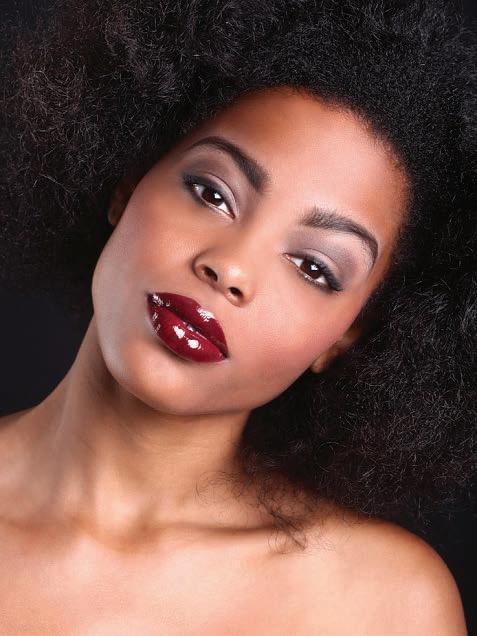



















she was going to stop doing those things if she’d never started.) But at some point relatively early in your marriage, HUH, your wife’s desire to swallow your spit and inhale your dick evaporated. It’s possible her desire to swallow/inhale the spit/ dick of her affair partner would have evaporated in roughly the same amount of time, and she would have lost interest in him and his dick and his spit, as well. Some people have a hard time sustaining desire over time—and contrary to popular belief, women have a harder time sustaining desire in committed, romantic relationships than men do. (Wednesday Martin wrote an entire NYT best-selling book about it, Untrue: Why Nearly Everything We Believe About Women, Lust, and Infidelity Is Wrong and How the New Science Can Set Us Free.)
Of course, it’s possible your wife isn’t the problem. You may have said or done something that extinguished your wife’s desire for you. Or, hey, maybe your personal hygiene leaves everything to be desired. (I’ve received countless letters over the years from women whose husbands refuse to brush their teeth and/or can’t wipe their asses properly.) Or maybe you’re emotionally distant or cold or contemptuous or incredibly shitty in bed. Or maybe you’re not the problem! I don’t know you, HUH, and other than the very few details you included in your very brief letter, I don’t know what’s going on in your marriage.
But I do know this: If you can leave, HUH, you most likely should. But if you decide to stay because you want to stay, or because leaving is unthinkable for cultural or religious or financial reasons . . . well, seeing as how your wife hasn’t wanted to fuck you for decades, and seeing as how you no longer
want to fuck your wife, you should release each other from the monogamous commitment you made more than two decades ago. If you can adjust your expectations—if you can both agree to define your marriage as companionate, i.e., you’re friends and life partners, not romantic or sexual partners—you may be able to appreciate your marriage for what it is. But to do that, you’ll have to let go of the anger and disappointment you feel over what it’s not. And to be clear: if your marriage is companionate, you should both be free to seek sex with outside partners.
Q : Simple question, probably not a simple answer: How do you keep things exciting once the shiny, new phase of a relationship is over? Is it normal to reach a stage where you know someone so well that they’ve become boring? Isn’t that just the fucking worst? —S AME OLD, SAME OLD
A : Recognizing that some people actually enjoy boring—I have it on good authority that some people can get a thrill knitting sweaters and sitting still— there is something the rest of us can do to keep things exciting once the shiny, new phase of a relationship is over: go on strange and exciting new adventures together. Early on in the relationship, SOSO, your new partner was your exciting new adventure, and you were theirs. But now instead of being the exciting new adventure, you have to figure out what exciting new adventures you’d like to go on together—and then get out there and go on them.
Q : I’m a young, nonbinary ethical slut, and I have a question about a kink that one of my partners is discovering. We are very
close, although we’re not sexually active with each other at this point (we’re currently long-distance). She has another partner with whom she is currently exploring “little” play. I feel personally uncomfortable with age-regression play, but obviously I want to be supportive and understanding. We have fairly good communication, and I’m able to tell her when I feel uncomfortable and that I still love and support her but just can’t talk about “little” play at the time. I would love to be able to talk about it with her and be supportive, and at the very least make sure I don’t say anything ignorant or hurtful to her. My question is this: How can I stretch my zone of comfort and learn about this kink in a healthy and educated way? —A LITTLE UNCOMFORTABLE
A : If you want to get more comfortable discussing “little” play, i.e., adults pretending to be small children with other consenting adults, the Dream a Little podcast is a good place to start. It’s hosted by Lo, an AB/DL (adult baby/ diaper lover) who has been a guest on my own podcast and who recently made an appearance in the column offering advice to a sad and lonely AB/DL. That said, ALU, you aren’t obligated to listen to your partner talk about this kink if the topic makes you uncomfortable— or just bores you senseless. Tell her that you support her and you know it’s exciting to explore a new kink, and while she doesn’t have to hide this from you, it’s not something you’re comfortable—at least for now—discussing at length. v
Send letters to mail@ savagelove.net. Download the Savage Lovecast every Tuesday at thestranger.com. @fakedansavage
The Dept of Urology at Univ of IL at Chicago (UIC), located in a large metropolitan area, is seeking a full-time Assistant Professor of Clinical Urology/ Physician Surgeon to assist the Dept teach & train medical students & residents in the field of Urology; Provide clinical patient care in Urology in the hospital & outpatient clinics, specifically in regards to treatment of male infertility; Conduct research related to the mechanisms & treatment of reproductive dysfunction; Publish & present research findings, prepare & submit grant applications & perform University service as assigned. Requires MD degree or its foreign equivalent & 5 yrs of training (1 yr of general surgery residency training & 4 yrs of Urology residency training) & hold valid IL medical license. No travel required. Please submit CV, cvr ltr, & 3 references by 6/25/19 to the Dept of Urology (M/C 955), UIC, 820 S Wood St, Chicago IL 60612 or to: UROLOGYHR@uic.edu. UIC is an EO/AAE. Minorities/women/ veterans/individuals w/ disabilities encouraged to apply. UIC may conduct bkgrd checks on all job candidates upon acceptance of contingent offer letter. Bkgrd checks will be performed in compliance w/ Fair Credit Reporting Act. (06/20)
Slipstream Group, Inc. seeks Energy Engineer in Chicago, IL: Analyze bldg. energy performance for green bldg. programs. Perform design review, energy modeling & site verification. Provide energy conservation recommendations & best practices for energy efficiency. Reqs. Master’s in architecture, architectural engg., energy engg. or rltd field (or BSc. + 2 yrs exp. as Energy Engg. or relevant exp.). Must have LEED AP BD+C cert. & demonstrated ability using eQuest. <5% travel to HQs in Madison, WI. Send resume to F. Greb, 431 Charmany Drive, Madison, WI 53719 (06/20)
Software Engineer. Chicago, IL. Develop, create and modify computer applications software. Work with: CboeSilexx trading platform , C#, .NET, WPF using visual studio as platform, Jenkins, Prometheus, postgres. Required: Master’s Degree in Computer Science/ Engineering/related. NO PHONE CALLS. Forward resumes to: Bats Global Markets Holdings Inc, Attn: Ms. Nyree Bryant, Ref: VK, 400 S. LaSalle St, Chicago, IL 60605 (06/20)
Senior Software Engineer. Chicago, IL. Develop, create and modify computer applications software. Work with: Microsoft Visual Studio (C#, C++), Eclipse(Java), MySQL, PosgtresQL, Apache Spark, Apache Cassandra, Apache Hadoop, SVN, GIT, Mercurial, ActionScript3, PHP. Required: Two years experience in job offered/ related. NO PHONE CALLS. Forward resumes to: Bats Global Markets Holdings Inc, Attn: Ms. Nyree Bryant, Ref: VGBS, 400 S. LaSalle St, Chicago, IL 60605 (06/20)
Higher Ed Consulting Manager - Chicago, IL: Utilize technical analysis & design principles to formulate detailed Oracle
cloud application designs/ processes to implement new/modified functionalities through interviews & design sessions. Participate in the definition & development of requirements & detailed design to develop clear definitions of requirements & functions for Oracle Cloud Financial system implementation. Manage remediation efforts to multiple business processes while identifying & proactively mitigating project risks during design, build & test phases of Oracle Cloud Financial system implementation. Must have a Bachelor’s degree in Finance, Accounting, Electrical Engineering, Information Systems or foreign equivalent & 6 yrs exp. w/solving business problems by enabling business transformation & charting journey from current to future state enterprise environment; leading assessment and design efforts; implementing PeopleSoft Human Capital Management w/Oracle Certified, Oracle Cloud HCM/ ERP w/Oracle Certified to replace legacy systems, Peoplecode, SQR, AWE, integration broker, FSM, Page Composer, Sandbox, Configuration Package, & Flexfields; implementing 3 of the following modules: Human Resources, Benefits, Payroll, Talent Management, Workflow, Security & Absence Management. 80% travel to unanticipated worksites throughout North America. Telecommuting allowed when not traveling. Individuals may reside anywhere in the US. Exp may be gained concurrently. Apply to Huron by sending resumes to: Cara Perlow, Huron, 550 W. Van Buren Street, Suite 1700, Chicago, IL 60607. (06/20)
Higher Ed Consulting Manager - Chicago, IL: plan, configure, design, build, convert, train, & support the entire software implementation lifecycle; identify and proactively mitigate Oracle Cloud project risks incl. impact of future updates/releases; facilitate & lead client meetings; manage client deliverables, project budget, quality assurance, & engagement economics, incl. forecasts, burn rates & accounts receivables; participate in practice & business development initiatives; coach & mentor analysts & associates. Must have a Master’s degree in Finance/Accounting, Engineering, Engineering/ Business Management, Information Systems, or related & 2 yrs exp. w/ evaluating charts of accounts to determine required data elements for financial accounting & reporting; designing & implementing new charts; implementing & supporting financial modules; integrating Oracle Cloud with third party solutions using Oracle Integration Cloud, SOA Suite and REST APIs; performing data conversions & warehousing, incl. supplier master, customer master, assets, projects/grants, invoices & item master; file based data transfer, HDL data loader, ADFBDI, ETL Tools & oracle cloud new release analysis. Alternatively, may have a Bachelor’s Degree in Finance/Accounting, Engineering, Engineering/ Business Management, Information Systems, or related & 5 yrs exp. w/above experience/skills. 80% travel
to unanticipated worksites throughout North America. Telecommuting allowed when not traveling. Individuals may reside anywhere in the US. Exp may be gained concurrently. Apply to Huron by sending resumes to: Cara Perlow, Huron, 550 W. Van Buren Street, Suite 1700, Chicago, IL 60607. (06/20)
Chief Executive Officer, Chicago, IL. Develops and implements the vision for the strategic development of PCMA and the PCMA Education Foundation globally. Serves as the chief executive of the organization with full authority for the management of company affairs and its employees. Provides strategic direction for the overall mission of the organization, sets the tone for the company image and culture, as well as ability to identify risks and problem solve. Full executive authority to hire, compensate and terminate PCMA staff within the approved budget of PCMA, and to establish the job descriptions, duties, and responsibilities of all staff in accordance with policies as may be established by the Board. Develop a culture of learning and purpose driven while outcome focused. Responsible for maintaining and upholding confidentiality of all PCMA matters. Enforce adherence to legal guidelines and in-house policies to maintain the company’s legality and business ethics. Develop high quality business strategies and plans ensuring their alignment with short-term and long-term objectives. Build trust relations with key partners and stakeholders and act as a point of contact for the Board. Determine and communicate PCMA’s strategic direction. Analyze problematic situations and occurrences and provide solutions to ensure company survival and growth. Lead and motivate subordinates to advance employee engagement and develop a high performing managerial team. Review financial and non-financial reports to devise solutions or improvements. Oversee all operations and business activities to ensure they produce the desired results. Requires: Bachelor’s in Business Administration and 8 yrs of experience. In the alternative, an MBA and 6 yrs of experience will also be considered. Will accept any suitable combination of education, work and experience. Expertise to include: Business Growth and Development, Vision Strategy and Leadership, Budget and Financial Management, Global Leadership, Acquisitional and Growth Strategy, Negotiations and Brand Development. Travel required 50-60% of the time and 25-30% international travel. Resumes only: Gina Meier, Professional Convention Management Association, 35 E. Wacker Dr., Ste. 500, Chicago, IL 60601 (06/20),
PROJECT ENGINEER Chicago, IL. Mail resume to Kathy L Bennett, S&C Electric Company, 6601 N. Ridge Blvd, Chicago, IL 60626. (06/20) SR MANAGER INSIDE SALES. Chicago, IL . Travel required. Mail resume to Kathy L Bennett, S&C Electric Company, 6601 N. Ridge
E-mail salem@chicagoreader.com with details or call (312) 392-2970





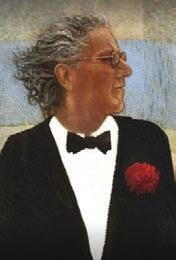
















–
Steve Johnson, Chicago Tribune